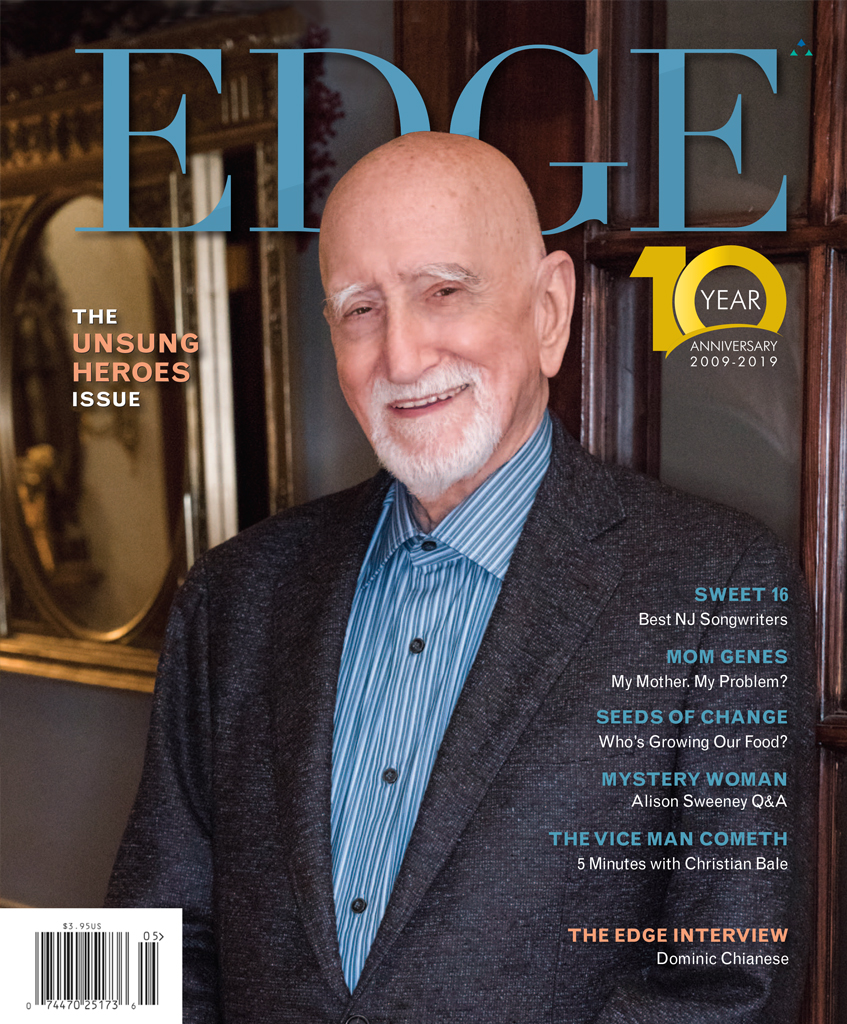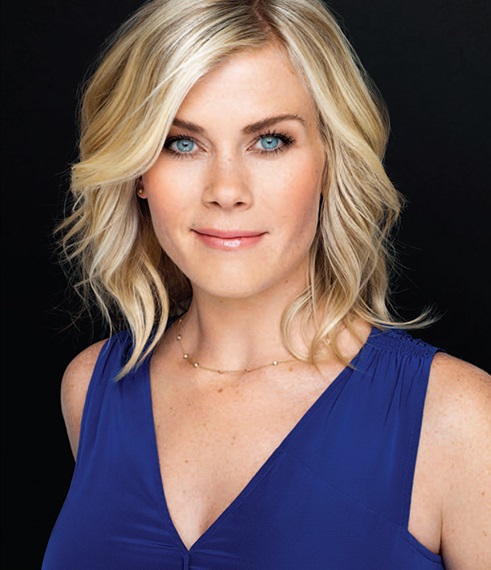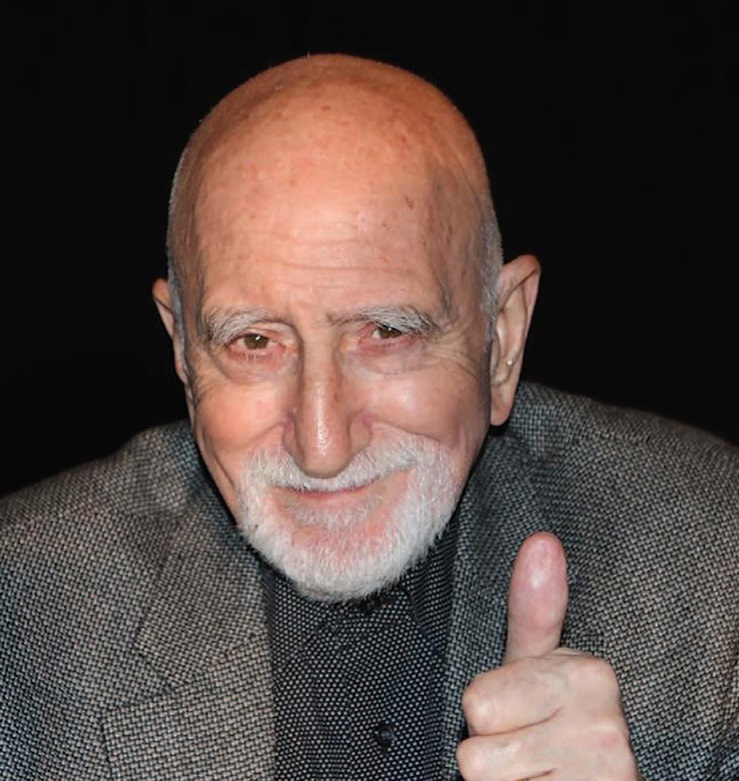Spring Happenings in the Garden State
POP • ROCK • COUNTRY • GOSPEL • R&B
Friday • April 19 • 8:00 pm
NJPAC
Eric Roberson Live In Concert
Soul star Eric Roberson performs in the Victoria Theater just a few miles from his Rahway hometown. The two-time Grammy nominee is known for pushing the envelope in R&B and his voice has been described as “red velvet cake.”

Courtesy of NJPAC
Saturday • April 20 • 8:00 pm
NJPAC
Gary Mullen and The Works One Night of Queen
Gary Mullen and his band stage a live recreation of Queen in concert. The international show makes a one-night stop in Newark in the intimate Victoria Theater.

Courtesy of NJPAC
Wednesday • May 1 • 8:00 pm
State Theatre
Brit Floyd World Tour 2019
The best Pink Floyd tribute band on the planet celebrates “40 Years of The Wall” in its most ambitious production ever. The show will also include iconic hits from Dark Side of the Moon, Wish You Were Here and Animals.
Friday • May 3 • 8:00 pm
Prudential Center
Cher Here We Go Again Tour
Cher’s performance in Mama Mia: Here We Go Again inspired her 2019 tour—the first to cross the country in five years. She’ll be performing her greatest hits along with ABBA songs from her new Dancing Queen album.

Courtesy of State Theatre
Friday • May 3 • 8:00 pm
State Theatre
Kip Moore Room to Spare Acoustic Tour
The country star has knocked out a string of #1 hits, including “More Girls Like You” and “Somethin’ ‘Bout a Truck.” He is joined by special guest Muscadine Bloodline for this show.

Courtesy of Kean Stage
Saturday • May 4 • 7:30 pm
Kean Stage
Jon Secada Live In Concert
The Cuban-American singer-songwriter has been charming audiences for more than 25 years with soulful hits including “Bella” and “Too Late Too Soon.” Secada won a Best Latin Album Grammy in 1992 and was nominated for Best New Artist. He won a Latin Grammy for Best Traditional Album in 2017.

Courtesy of The State Theatre
Saturday • May 11 • 5:00 pm
Prudential Center
Gospelfest A Tribute to Aretha Franklin
McDonald’s Gospelfest comes to The Rock with a message of peace, joy and love—featuring the music of the late Aretha Franklin.
Saturday • May 11 • 8:00 pm
UCPAC
Lou Maresca Live At the Fillmore
Maresca’s tribute band recreates the energy of the Allman Brothers legendary live concerts. They have performed on the same bill as Lynyrd Skynrd, Molly Hatchet and Marshall Tucker.
Wednesday • May 29 • 8:00 pm
State Theatre
Gary Puckett, The Cowsills, The Turtles & Friends The Happy Together Tour
Legendary rockers from the 60s and 70s come together for an unforgettable evening. Also on the bill are Chuck Negron (Three Dog Night), The Buckinghams and The Classics.

Courtesy of the Prudential Center
Wednesday • June 5 • 7:00 pm
Prudential Center
Twenty One Pilots The Bandito Tour
The Grammy-winning duo of Josh Dun and Tyler Joseph take the stage in support of their new album, Trench.

Courtesy of the Prudential Center
Sunday • June 16 • 7:00 pm
Prudential Center
Wisin y Yandel Como Antes Tour
The legendary Latino urban music duo visits The Rock in support of their new album The Big Leagues.
CLASSICAL
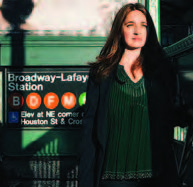
Courtesy of NJPAC
Thursday • April 25 • 1:30 pm
NJPAC
New Jersey Symphony Orchestra Xian Conducts Mozart
Xian Zhang leads the NJSO in an afternoon featuring Mozart’s Concerto No. 23, featuring Simone Dinnerstein on piano. Mozart’s Symphony No. 40 and Walton’s Suite No. 2 from Façade are also part of the program.

Courtesy of NJPAC
Sunday • May 5 3:00 pm
NJPAC
Bell, Denk & Isserlis Live In Concert
Violinist Joshua Bell, pianist Jeremy Denk and cellist Steven Isserlis team up for an afternoon performance that includes Mendelssohn’s groundbreaking Piano Trio No. 1. The three virtuosos won critical acclaim for the 2016 album For the Love of Brahms.
 Thursday • May 16 • 1:30 pm
Thursday • May 16 • 1:30 pm
Saturday • May 18 • 8:00 pm
NJPAC
Sunday • May 19 • 3:00 pm
State Theatre
New Jersey Symphony Orchestra Art of the Double Concerto
Xian Zhang conducts a program featuring violinists Eric Wyrick and Annelle Gregory. The performances are highlighted by Bach’s riveting Concerto for Two Violins.
Sunday • May 19 • 3:00 pm
NJPAC
New Jersey Youth Symphony Carmina Burana
The NJYS celebrates its 40th anniversary season with Carl Orff’s masterpiece for chorus and orchestra. Nearly 500 talented young people will perform.
JAZZED

Photo by Andreas Lawen
Saturday • May 4 7:30 pm
NJPAC
The Yellowjackets Live In Concert
The masters of jazz fusion have been making music going on four decades, racking up Grammy nominations and enchanting millions of fans. YJ vets Russell Ferrante, William Kennedy and Bob Mintzer lead the group into the Victoria Theater.
FOR THE KIDS

Courtesy of The State Theatre
Saturday • May 11 10:00 am, 12:30 & 3:00 pm
State Theatre
Puppet Theatre of Scotland The Man Who Planted Trees
An inspiring tale of a shepherd who transforms a wasteland into a forest one acorn at a time. The 3:00 show is a relaxed, autism-friendly performance.
 Saturday • May 11 2:00 & 3:30 pm
Saturday • May 11 2:00 & 3:30 pm
NJPAC
New Jersey Symphony Orchestra The Sound of Stories
The NJSO presents an enchanting children’s program built around music’s most-loved stories, including Swan Lake, The Nutcracker, Romeo and Juliet and Harry Potter.

Saturday • May 18 • 7:00 pm
UCPAC
Animaniacs Live In Concert
Randy Rogel and Rob Paulsen are joined by a full orchestra as they perform songs from the beloved TV show of the 1990s.

Courtesy of the State Theatre
Tuesday • May 21 3:00 & 6:00 pm
State Theatre
Daniel Tiger’s Neighborhood King for a Day!
The top-rated PBS children’s series goes live with a stage show that invites young audience members on board the trolley to the Neighborhood of Make Believe.

Upper Case Editorial
Friday • May 31 • 7:00 pm
NJPAC
George Street Playhouse The Magic Treehouse: Showtime with Shakespeare
Jack and Annie are transported back to Elizabethan England and meet the bard himself in this hip-hop musical based on the work of Mary Pope Osborne.

Courtesy of NJPAC
Saturday • June 1 • 2:00 & 7:30 pm
NJPAC
New Jersey Symphony Orchestra Harry Potter and the Order of the Phoenix
The NJSO performs the iconic score of this Potter classic, which is projected on the big screen at Prudential Hall. Joshua Gerson of the New York Philharmonic conducts.

Courtesy of The State Theatre
Thursday • June 13 • 6:30 pm
State Theatre
Jojo Siwa The D.R.E.A.M. Tour
Nickelodeon star Jojo Siwa embarks on her first live tour. Her platinum single “Boomerang” has had more than 700 million views on YouTube.
SONG AND DANCE
 Friday • May 10 • 8:00 pm
Friday • May 10 • 8:00 pm
State Theatre
American Repertory Ballet Beauty and the Beast
Choreographer Kirk Peterson presents a new ballet set to a score by Tchaikovsky.
 Friday • May 10 • 8:00 pm
Friday • May 10 • 8:00 pm
Saturday • May 11 • 8:00 pm Sunday • May 12 • 3:00 pm
NJPAC
Alvin Ailey American Dance Theater Ailey Ascending: The 60th Anniversary
A very special program features the New Jersey premiere of Lazarus, inspired by the life of Alvin Ailey, as well as Revelations and Timeless Ailey—composed of excerpts from rarely seen gems.
Friday • June 14 • 7:00 pm
NJPAC
Jersey Moves Emerging Choreographers
NJPAC hosts the fifth annual contemporary dance showcase by young Garden State choreographers. Each is mentored by a leader in the world of modern dance.
LAUGHS
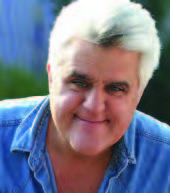
Photo by Lee Stranahan
Friday • April 25 • 8:00 pm
NJPAC
Jay Leno Live On Stage
Tonight Show host Jay Leno explores his 40-plus years as a comic legend as part of NJPAC’s Speaker Series.

Photo by Tom Villegas
Saturday • June 15 • 6:00 & 9:30 pm
NJPAC
Gabriel Iglesias Beyond the Fluffy World Tour
Comedy Central favorite Gabriel Iglesias is booked for two shows in Prudential Hall. The Hollywood Reporter recently included him on its list of Top 40 Comedy Players.
Editor’s Note: For more info on these listings log onto the following web sites:
Kean Stage • keanstage.com
State Theatre • stnj.org
NJPAC • njpac.org
Prudential Center • prucenter.com
Union County Performing Arts Center & Hamilton Stage • ucpac.org
Sly, smart, eccentric and extravagant are words normally used to describe an accomplished artist. In the case of James Kearns, those words are also applicable to his art. Kearns’s sculptures invite audiences to explore and celebrate the haunting, the absurd and the grotesque that make up the human form.
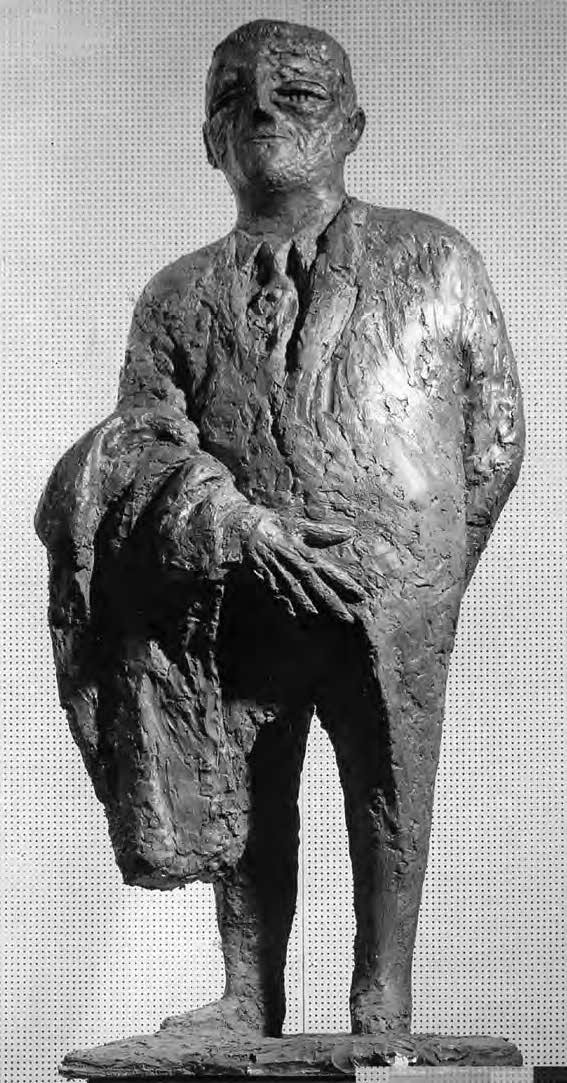
Everyman plaster, 6′, 1950

Blind Girl, fiberglass, 59″, 1960

Spring, fiberglass, 63″, 1971

Poet, fiberglass, 22″, 1978

Minotaur, bronze, 25″, 1950

Beast, Fiberglass, 17″x31″

Fashion, fiberglass, 47″, 1976

Trixter, fiberglass, 28″ 1987
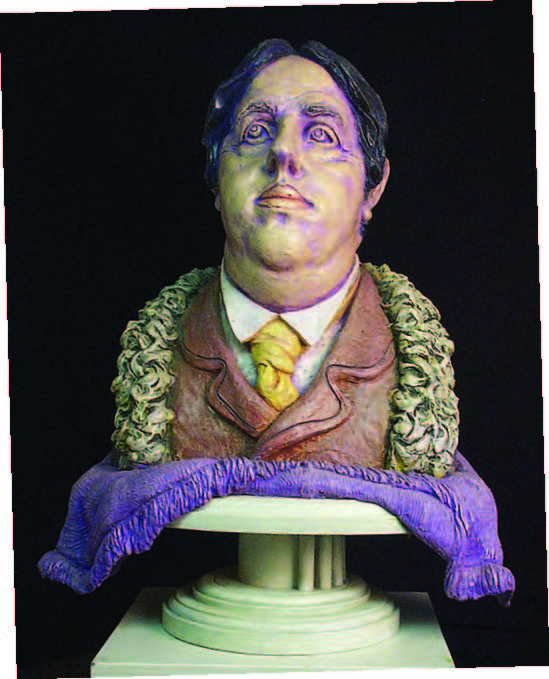
Oscar Wilde, fiberglass, 29″, 1990
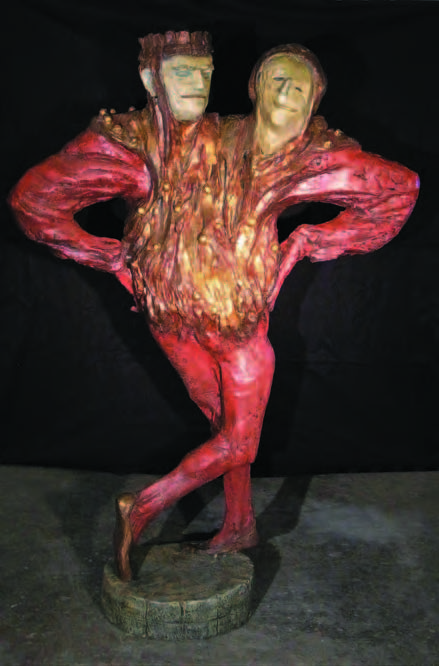
Dancer, fiberglass, 75″, 1966-67
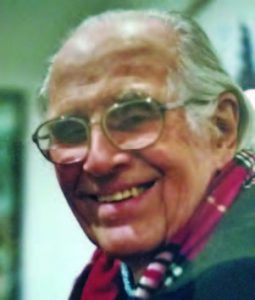 James Kearns, a longtime resident of the Morris County town of Dover, is a graduate of the Art Institute of Chicago. He served as an instructor of drawing, painting and sculpture at The School of Visual Arts in New York for three decades beginning in 1960, and has also taught at such schools as the Skowhegan School of Painting and Sculpture in Manhattan and Fairleigh Dickinson University. Kearns’s work is in the permanent collections of the Museum of Modern Art, The Whitney, Harvard University, and the Smithsonian National Collection of Fine Arts, among others.
James Kearns, a longtime resident of the Morris County town of Dover, is a graduate of the Art Institute of Chicago. He served as an instructor of drawing, painting and sculpture at The School of Visual Arts in New York for three decades beginning in 1960, and has also taught at such schools as the Skowhegan School of Painting and Sculpture in Manhattan and Fairleigh Dickinson University. Kearns’s work is in the permanent collections of the Museum of Modern Art, The Whitney, Harvard University, and the Smithsonian National Collection of Fine Arts, among others.
One might expect an artist with that résumé to possess a mighty ego. But Kearns is a true gentleman, blessed with a hefty laugh and not a whiff of pretentiousness. “Onward!” is one of his favorite expressions. Now a nonagenarian, he continues to push onward with his art, which runs the gamut from riveting draftsmanship to the wry, humorous sculptural forms shown in these pages.
—Tova Navarra
More and more consumers are singing the praises of subscription car services.
By Sarah Lee Marks
When my Uncle Sal returned from his annual six-month spring/summer break in Cape Cod, he called me with a five-word request: “I need a new car.” Having left his 2014 Subaru back in Massachusetts, he was anxious to pick up a new 2018-19 vehicle for his winter home in Las Vegas. We made a plan to test-drive some new luxury cars and SUV’s to see what struck his fancy. Our first stop was the local Cadillac dealership. As we pulled in to the lot, he asked, “What do you think of these subscription services?”
All right, Uncle Sal! Always surprising!
“How much do you know about these programs?” I asked.

www.istockphoto.com
“My friends are driving some sweet rides,” he shrugged. “They say they drop the car off at the dealer for all the services. The insurance and registration are covered in one payment. When they get ready to go back east, they turn it in, no penalty, and get something else in New York. Do they have that everywhere?”
“Every program is different and, between them, the variables can be quite confusing,” I said. “Let’s see what you like driving first.”
Vehicle subscription programs offer an annual contract for high-quality credit clients, starting at around $1,000.00 a month, depending on the model. Outside of major metropolitan areas, most of these plans are limited to luxury vehicles. At our first stop, we inquired about the Book by Cadillac plan, which was advertised as a “simpler, smarter way to drive.” Unfortunately, they were not accepting any new members at that time.
The car subscription model is trending, with as many variations as there are interstates. As Sal continued to test-drive cars at the Porsche, Jaguar, BMW and Mercedes dealerships, we found the amount of knowledge at the dealership level varied significantly. When pressed for particulars, all of the salespeople with whom we interacted suggested going online to their websites. It turns out that most of the manufacturer programs are designed to be handled online, over the phone and without competing with the franchised dealer’s base of business.
The sales manager at Volvo showed Sal their XC90 and S60, the only models currently offered under the Care by Volvo platform. “The entire deal is completed on the phone app,” our sales manager explained. “We meet the client, deliver the car, and hope they decide to buy or lease one after they try it.”
That sounded like a good fit. But Uncle Sal, who is not a technophile, wasn’t crazy about the phone app process, never mind the $1000-and-up monthly ticket.
“You do realize you could lease the same car for less money?” I offered.
“Yeah, but then it sits for months and I’m paying insurance and registration to not drive the car,” he said. “This way I get a new car whenever I want.”
“There are some other versions of the monthly subscription plan you might like better,” I pointed out. Indeed, individual dealership groups have now entered the subscription fray. It’s a way of retaining their customers, harvesting new clients and also turning used car inventory.
We added the local Ford dealership to our itinerary. Jeff, the customer concierge in charge of their subscription service, explained the Try & Buy program. My uncle immediately chafed at its phone app component, but changed his tune when he saw how easily he could order a car.
“You simply select the car you want from our available inventory, choose the number of miles you will drive, pick the number of months you will want it for, and hit submit,” he said. “Once the credit application and driving record are checked out, we bill you monthly. Furthermore, we deliver the car to you, pick it up when it needs service, or want to switch it out.”
“Hold up,” Sal said. “For $600.00 a month, all in, I drive a new 2019 Ford Edge?”
“Well sir,” Jeff replied, “It will have miles on it, and it may not be a 2019. But it won’t be older than a year or have more than 50,000 miles. That is our dealership policy. Every dealer can set their own standards.”
“What if I crash it?” Sal asked. (More likely totaled it, I thought…good question.)
The dealership has insurance, he answered, adding that it didn’t offer the program to people with bad driving records, poor credit or DUI’s. In addition, every family member who might drive the car has to supply a driver’s license and have their record checked.
“What about crashes where it’s not totaled or your client’s fault?” I jumped in. “Who gets sued for diminished value?”
“I believe we would go after the responsible party’s insurance, but I’ll have to check,” he replied.
“How many times can Sal switch cars on your plan?” I asked.
“Once in twelve months, on our one-year plan, which is less expensive than the six-month plan,” Jeff said. “But if you want to go month-to-month, the monthly fee is $100.00 more…but that gives you the maximum flexibility to try different models based on your needs. A four-wheel drive in winter, a truck for spring yardwork and a seven-passenger van for family vacations.”
The selection of makes and models in the Ford dealer’s subscription plan appealed to my uncle’s fondness for cars of all kinds, dating back to his high-school Dodge Duster. This is just a more exclusive form of car rental, I pointed out. There is a “plan for every seat,” as dealers like to say.
“I still don’t like the thing-y on my phone,” Sal complained over lunch. As a retired accountant, however, he was mostly focused on crunching the numbers and calculating the return on investment. “It’s the ‘time value’ of money I need to understand.”
That night, in preparation for round two of Car Search, I called my acquaintance, Janine, an early adopter of the subscription service model.
“I travel a lot,” she said, “so I need something to get around town when I’m home. I use Canvas.”
Canvas is a service built around used Fords. For $600 a month, Janine got 500 miles, insurance and registration on a 2018 Fusion, which had 20,000 miles when she started. Her only complaint was that Canvas did not have more makes and models from which to choose.

www.istockphoto.com
“I love the flexibility and it’s fun,” she said. “Everything is handled online, I don’t have to talk to anyone. They pick it up for service. I can add miles or extend my monthly plan from the phone app, anytime.”
Sal and I resumed our research on local subscription options the next day. He decided to rent until he got a firmer grasp of the possibilities. As we pulled into the Enterprise lot he said, “This Nissan Altima is costing me $600 for a month. My insurance covers me.”
“Well,” I said, “that gives you time to consider what car you really want. Then we can find a plan that lets you drive all the cars of your dreams…until there aren’t any left.”
“Now that sounds like a fun bucket list plan,” Sal smiled.
Revolve
Sal did a little research on his own. He called his buddies in Miami, who use Revolve, a Florida-based company that does luxury subscriptions. Revolve specializes in Porsche, Maserati, Land Rover, Ferrari, Lamborghini and other exotics. They offer “all-inclusive” memberships starting at $1,000 a month. Unfortunately, their service was not available in Nevada or Massachusetts.
Editor’s Note: Sarah Lee Marks is a car concierge and automotive consumer advocate for all things car-related. Sarah lives in Henderson, Nevada with her husband, Norman. You can ask her car questions at her website: www.mycarlady.com.
These are New Jersey’s greatest songwriters…
Crafting songs is no way to make a living. Making the music and lyrics come together in just the right way can be frustrating, time-consuming and totally unpredictable. An artist can spend months on a song and never quite get it right. Or it can pop into his or her head in a serendipitous moment. The best piece of advice for a songwriter might be Don’t quit your day job. When the stars align, however, the result can be nothing short of immortality. Which is why they do what they do.
New Jersey has been producing hit-makers for more than a century, from the earliest days of popular music to Broadway shows to every conceivable sub-genre of rock and R&B. It is difficult to put one’s finger on how or why spending one’s formative years in the Garden State elevates a songwriter’s craft, but the evidence that it does seems irrefutable.
Who are the best of the best? Here are my 16 picks…
ROCK ON

Bertrand Delgoff Paris
James Murphy Princeton Junction • B. 1970
Murphy is the driving force behind one of the first groundbreaking bands of the 2000s, LCD Soundsystem. The group energized the Electronic/Dance/ Alternative Rock genre with songs like “Losing My Edge” and “Daft Punk Is Playing At My House”—both of which were written by Murphy and produced by his DFA Records label. Murphy won his first Grammy last year for “Tonite,” which he co-wrote with bandmate Al Doyle.

nandinhazinha
Jon Bon Jovi Sayreville • B. 1962 & Richie Sambora Woodbridge • B. 1959
Bon Jovi—the man, not the group he fronted—was inducted along with Richie Sambora into the Songwriters Hall of Fame a decade ago. They penned a string of chart-toppers in the 1980s, including “You Give Love a Bad Name,” “Livin’ On a Prayer,” “Bad Medicine” and “I’ll Be There for You,” as well as fan favorite “Wanted Dead or Alive.” Bon Jovi also wrote “Blaze of Glory,” a #1 hit he recorded as a solo act in 1990. Their formula was simple: If both did not think a song had potential, they discarded it and started on the next one.

Upper Case Editorial
Bruce Springsteen Freehold • B. 1949
Even the eight people in New Jersey who don’t believe Springsteen is a musical genius have to admit he deserves top billing on this list. And he may be the finest songwriter this country has every produced. As a teenager, The Boss was deeply influenced by The Beatles, who wrote and played their own material. He carved out his own niche as a game-changing singer/songwriter in the 1970s with his poetic take on working-class life and his epic live performances, but also penned songs that were huge hits for other performers—including “Fire” (Pointer Sisters), “Because the Night” (Patti Smith) and “Blinded By the Light” (Manfred Mann). Although Grammys are an inexact measure of talent, the sheer number of Best Song and Best Album nominations Springsteen has accrued speaks to his ability to write at a consistently high level. Entire books have been produced on his work (including his own autobiography), so summing it up in a long paragraph tends to be perilous. However, the depth of his lyrics is easy to appreciate in “Born to Run,” “Hungry Heart” and “Born In the USA”—rock anthems so familiar that listening to them is almost like breathing.

Kotivalo
Donald Fagen Passaic • B. 1948
A move to the suburbs from gritty Passaic during Fagen’s pre-teen years greatly influenced his artistic outlook. He couldn’t stand it. He became a jazz junkie as a teenager and did not rediscover rock and R&B until he enrolled at Bard College—where he met guitarist Walter Becker. After graduating, the duo moved to Los Angeles and wrote songs for ABC/Dunhill recording artists. They co-wrote and released their first album as Steely Dan in 1972 and the rest is history. Aja, which hit stores in 1977, was one of the first albums by an American group to go platinum.

Chysalis Records
Debbie Harry Hawthorne • B. 1945
Best known as the front woman for the new wave group Blondie, Harry co-wrote a huge number of hits in the 1970s and 1980s, with bandmate Chris Stein and others. Her writing credits include “One Way or Another,” “Heart of Glass,” “Call Me” and “Rapture.” Before achieving superstar status, Harry worked as a go-go dancer and Playboy bunny, as well as a cocktail waitress at the East Village clubs where she later became a headliner.
POPULAR FAVORITES

Jeff Terrell
Charlie Puth • Rumson • B. 1991
Puth’s ability as a songwriter was first recognized by YouTube fans and by Ellen DeGeneres, who signed him to her label. His star continued to rise in 2015 with “See You Again,” the song he co-wrote and performed with rapper Wiz Khalifa, and “Marvin Gaye,” a huge international hit recorded with Megan Trainor. Just 27, Puth has already demonstrated stunning versatility in his songwriting and producing skills. His second album, 2018’s Voicenotes, was a hit with reviewers, who applauded his maturity, attention to detail and willingness to take chances with his lyrics.
Rob Fusari • Livingston • B. 1976
A multi-instrumental prodigy as a child, Fusari started writing songs at 22 and is credited with discovering Stefani Germanotta, aka Lady Gaga, in 2006. He co-wrote and co-produced most of her 2008 Grammy- winning album The Fame. Earlier, Fusari wrote “No, No, No” and “Bootylicious”—both #1 hits for Destiny’s Child. He has also written for Will Smith, Whitney Houston, ABC, Adam Lambert and the Back Street Boys.
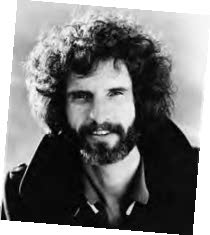 Bob Gaudio Bergenfield • B. 1942
Bob Gaudio Bergenfield • B. 1942
At age 15, Gaudio co-wrote “Short Shorts,” which rose to #2 on the charts. Two years later he formed the Four Seasons with Frankie Valli and wrote “Sherry,” the group’s first #1 hit. Working with Newark-born producer Bob Crewe, Gaudio wrote “Big Girls Don’t Cry,” “Dawn,” “Walk Like a Man” and “Can’t Take My Eyes Off of You.” Always on the alert for new ideas and inspirations, he authored the hit “Rag Doll” after a poor young girl washed his windshield while he was stuck in traffic in New York. Gaudio and his wife, Judy Parker, co-wrote “Who Loves You” and “Oh, What a Night” in 1975. He also wrote and/or produced songs for Frank Sinatra, Michael Jackson, Barry Manilow and Diana Ross, and produced six of Neil Diamond’s albums.
R&B + HIP HOP

The Come Up Show
SZA • Maplewood • B. 1990
Solana Rowe, aka SZA (SIZ-eh), is among a group of young performers who are remaking the soul and R&B genres. Her 2017 debut studio album, Ctrl, went platinum and was roundly hailed as the year’s best record. Her lyrics, which often explore themes of sexuality and abandonment, reference a range of influences, from fellow New Jerseyan Lauryn Hill to non-musicians Spike Lee to jazz singers like Ella Fitzgerald. SZA’s background also imparts a unique spin on her songwriting. Her father is a Muslim and her mother a Christian—both are high-achieving corporate executives—and she originally set her sights on a career in marine biology. In 2018, SZA co-wrote and performed “All the Stars,” the lead single on the Black Panther soundtrack, with Kendrick Lamar.
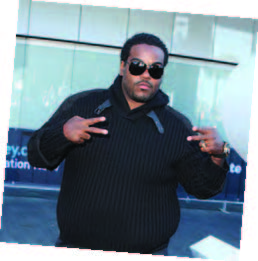
Eva Rinaldi
Rodney Jerkins Pleasantville • B. 1977
Jerkens, who went by Darkchild early in his career, established himself as one of the industry’s most influential hit-makers two decades ago. He co-wrote and produced songs for the top names in the business, including Toni Braxton, Brandy, Mary J. Blige, Michael Jackson, Beyoncé, Whitney Houston, Lady Gaga, Kanye West, Justin Bieber, Brittney Spears, Will Smith and Jennifer Lopez. Jerkins’s chart-topping hits include “The Boy Is Mine,” “Say My Name” and “Déjà Vu.”
Freddie Perren • Englewood • 1943–2004
Berry Gordy hired 24-year-old Perren as a member of the production team for the Jackson 5 in 1968. Over the next 15 years, Perren wrote or co-wrote some of the most iconic pop and disco hits, including “I Want You Back,” “ABC” and “Mama’s Pearl” for the Jackson 5, “Love Machine” for The Miracles, “Boogie Fever” for The Sylvers, “Heaven Must Be Missing an Angel” for Tavares and “Shake Your Groove Thing” and “Reunited” for Peaches & Herb. In 1980, he won the first Disco Grammy for writing the Gloria Gaynor hit “I Will Survive.” Perren also produced the Saturday Night Fever album.
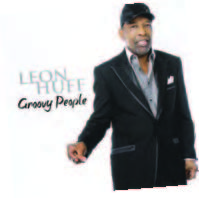
CD Baby
Leon Huff • Camden • B. 1942
A talented keyboardist, Huff teamed up with Philadelphia’s Kenneth Gamble when they were in their 20s to form one of the great soul music writing and producing duos. After working with Aretha Franklin and Wilson Pickett at Atlantic Records, they formed Philadelphia International Records in 1971 as a rival to Motown, adding deep bass and lush strings to their recordings—creating a foundation that would later popularize disco. Huff co-wrote “Backstabbers” and “Love Train” for the O’Jays, “If You Don’t Know Me By Now” for Harold Melvin and the Bluenotes, Billy Paul’s “Me and Mrs. Jones” and “Ain’t No Stoppin’ Us Now” for McFadden & Whitehead. Gamble and Huff’s biggest star of the 1980s, Teddy Pendergrass, was paralyzed in a car accident. The duo went into the Rock & Roll Hall of Fame in 2008 with more than 3,000 songs to their credit.
SHOW TUNES

Stage Magazine
Jerry Herman • Jersey City • B. 1931
The recipient of a Tony Award for Lifetime Achievement, Herman perfected his craft putting on musical productions at summer camps in the 1940s and 50s. An off-Broadway collaboration with friends Phyllis Newman and Charles Nelson-Reilly brought him to the attention of big-time producers and, in 1964, Herman was hired to write the score for Hello, Dolly! From there, Herman wrote the scores for Mame, La Cage aux Folles and other hit shows.
Jerome Kern Newark • 1885–1945
A giant in the world of theater composers, Kern wrote the music for hundreds of songs and worked with an all-star list of lyricists, including Ira Gershwin, Johnny Mercer and Oscar Hammerstein . His iconic songs include “A Fine Romance,” “Smoke Gets In Your Eyes,” “The Way You Look Tonight” and “Ol’ Man River.” The Kerns moved to Newark when Jerome was 12 and his songs were first performed in a musical at Newark High School (now Barringer High). Kern began composing for Broadway in the early 1900s and later composed scored for silent films. In 1927, he wrote the scores for Show Boat, the crowning achievement of his career. The vacation yacht Kern purchased with his earnings was named after the musical.
THIS+THAT

Collectors Choice Music
Dory Previn Woodbridge • 1925–2012
A talented lyricist who contributed to movie scores in the 1950s as Dorothy Langan, she married composer Andre Previn in 1959 and they churned out several Oscar-nominated songs. They also wrote songs for Bobby Darin, Sammy Davis Jr., Jack Jones, Nancy Wilson, Vic Damone and Rosemary Clooney. Previn’s fear of flying kept her from accompanying her husband on tour when he became a classical music conductor and they divorced in 1970 after she learned of his affair with Mia Farrow. Previn became a highly regarded singer-songwriter in the 1970s. Her intensely personal lyrics and political activism earned her a devoted following.
Cy Coben • Jersey City • 1919–2006
How many songwriters can claim that their songs were recorded by Benny Goodman, Peggy Lee, Eddy Arnold and The Beatles? Coben may be the only one. He was also the first writer of a UFO song: 1947’s “Those Flying Saucers,” which he co-wrote with longtime collaborator Charlie Grean, who was Arnold’s manager. Coben found his ultimate niche in Nashville during the late-1940s. He wrote several #1 hits for Arnold during the 1950s and his songs were popular on both sides of the Atlantic into the 1970s. Coben also wrote for Leonard Nimoy, whom Grean produced in the 1970s.

Embassy Music
Ol’ Blue Eyes
Wait, don’t shoot! No, Frank Sinatra does not make this Sweet 16 list. However, it’s worth mentioning that a) he was well known for tweaking a word or two in the songs he made famous and b) he actually did receive official co-writing credit on a handful of songs, including:
This Love Of Mine (1941)
Sheila (1949)
Peachtree Street (1950)
Take My Love (1950)
I’m A Fool To Want You (1951)
Mistletoe and Holly (1957)
Mr. Success (1958)
All That Jazz
For the better part of a century, New Jersey has been a fertile ground for pioneering jazz performers, as well as providing dozens of venues where people from all walks of life could enjoy groundbreaking acts. To call jazz composers “songwriters” sounds a bit pedestrian, but their work has certainly stood the test of time alongside composers of popular music. Here are three of the genre’s New Jersey giants…

Tom Beetz
Wayne Shorter Newark • 1933–
Shorter has been at the leading edge of his craft for 60 years, as a writer, arranger, saxophonist and bandleader. The jazz standards he has crafted are too numerous to mention, while his Grammy wins are now in double-digit territory. Shorter’s collaboration with Miles Davis and his work with Weather Report rank among the most productive quarter-century enjoyed by any musician in history.
James P. Johnson • New Brunswick • 1894–1955
A great deal of the evolution of ragtime into jazz occurred in the Garden State thanks to the writing and performing of Johnson, whose most famous song “Charleston” ignited an epic dance craze during the Roaring ’Twenties.
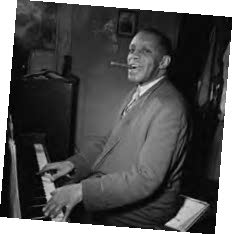
William P. Gottlieb
Willie Smith Newark • 1897–1973
Smith was known as The Lion during a performing career that stretched into the 1970s. A pioneer of stride piano, Smith had a profound influence on the music of Duke Ellington, and was regarded—along with Fats Waller and James P. Johnson—to be the masters of their craft.
Today, New Jersey (specifically, Newark) can legitimately lay claim to the title “epicenter of jazz” thanks to the radio station WBGO, which streams music and interviews 24/7 at wbgo.org. The station was founded in 1979 and reaches a global audience of 400,000 listeners a week, as well as providing content for NPR and Jazz at Lincoln Center.
Editor’s Note: Mark Stewart does not sing or play an instrument, but he has written two books related to the music industry (Will Smith and Ultimate 10 Music Legends) and produced the guidebook for Woodstock ’94. He has interviewed jazz performers Vince Giordano and Audra Mariel for EDGE, as well as Jeff Hanna of The Nitty Gritty Dirt Band.
Where on earth do you get this stuff?
By Andy Clurfeld

Courtesy of Razza
Dan Richer, the multiple James Beard Award-nominated chef at Razza Pizza Artigianale on Grove Street in Jersey City, may have skipped his graduation ceremony at Rutgers to go to Italy, but he’s been the university’s biggest booster as a restaurateur. You’ve heard of Richer’s renown Project Hazlenut Pizza? No? Well, look it up on The New York Times web site and understand why the newspaper’s restaurant critic Pete Wells gave Razza a three-star review in 2017. The background according to Richer: Before the 1900s, the hazelnut tree was prevalent in New Jersey. Disease wiped it out. Oregon became the hazelnut capital of America. But, with hazelnuts in demand, a worldwide shortage ensued. Enter Rutgers, with its prominent school of agriculture and Dr. Thomas Molner, the head breeder of what soon would be known as Rutgers Project Hazelnut. Molner and his crew worked, and worked hard, to revive the hazelnut in New Jersey. What they produced, Richer supported – by purchasing the crop. He made—of all things—a pizza of hazelnuts. A pizza! Who knew? “The Project Hazelnut Pizza has hazelnuts, a little fresh mozzarella and ricotta and a few drops of local honey,” Richer says. It’s brilliant. Unlike anything you’ve ever tasted. And pure Garden State. “Now there are more than 10,000 hazelnut trees in New Jersey under Rutgers’ supervision.”
Travel down Ryders Lane in the New Brunswick-Millstone environs and take them in. Extraordinary. And it’s thanks to a famous chef that the hazelnut, Dr. Molner and Rutgers are getting their due.
Who are the other farmers and food artisans Richer relies on to keep Razza riding high?
“My neighbors at Cedar Hill Farm, on Red Hill Road in Middletown, Agnes deFelice and her son Gary deFelice,” Richer says. The deFelices grow strawberries on their farm for Razza and, during that precious three-week season in spring, Richer picks them up on his way to the restaurant and takes in the aromas of still-warm-from-the-sun strawberries all the way from Middletown to Jersey City. “On Day One, we do strawberry salad. Day Two, we have to put them in the fridge, so we make strawberry jam or a topping for dessert. I just guarantee Agnes and Gary that I’ll buy whatever they pick. It’s worth it. The season is so short. I just pray they don’t sell their land to developers.”
What and who are the favorites of other restaurateurs and chefs?
Mark Pascal & Francis Schott • Owners • Stage Left Steak and Catherine Lombardi • New Brunswick
“Dreyer Farms in Cranford is a seven-acre farm in an area that has become surrounded entirely by suburb. Family-run for generations, they have a great farm market for consumers and they also work well with restaurants, letting us know what is coming in and making sure we are able to take advantage of it.
“Mike Baker is a lawyer first and a farmer second. He owns 4½ acres in East Brunswick, and basically grows us whatever we ask for. We have a meeting every year at the end of winter and decide what the plantings will be for the coming year. He supplies the lion’s share of our heirloom tomatoes—also a tremendous amount of herbs that we use.”

Courtesy of Common Lot
Ehren Ryan • Chef-Owner • Common Lot • Millburn
“We use a few local farmers for very specific items and they are all very seasonal. We love what they produce—in season. First is Malcolm Salovaara, of PK’s Four Brothers Farm in Bernardsville. This is a family-based farm who raise mainly pigs and chickens. The chickens are some of the best I have eaten anywhere. They are very seasonally driven, so the chicken season is from around April to October. We use the chickens with ramps, morels, spring items that bode well with the flavor of their chickens.
“Second is Dan Liplow, [who operates] the Foraged Feast, all over New Jersey. Dan is our forager and mushroom guy. During spring, summer and fall, Dan will search out interesting ingredients for us to test in our dishes. He brings sassafras for us to use, which we turn into root beer. Wild garlic roots, wild watercress. He also brings us black current wood for oils. During the winter months he has access to cultivated mushrooms that are by far are the best-tasting mushrooms.
“Third is Colleen Gilmore, of Buds and Blooms in West Milford. Colleen has a small farm that supplies us with all different types of herbs, edible flowers, small heirloom tomatoes and other little items. We sit down and chat about what can she grow for us—bronze fennel, Thai basil flowers, chive flowers, etc. The quality of the herbs and flowers is second to none. So pungent, so much flavor, and they look so bright.”

Courtesy of Osteria Radici
Randy Forrester • Chef-Owner Osteria Radici • Allentown
“We use Korean grapes and pears from Evergreen Orchard Farm in Yardville. We compress the pears with stracciatella from Italy and preserve the grapes for our semifreddo. We use potatoes and cabbages from New Sung Sang farm in Millstone. We hay-smoke both the cabbage on a pork dish and purée the potatoes as a thickening agent in spaghetti, with mussels.”
Bruce Lefebvre • Chef-Owner The Frog and the Peach • New Brunswick
“We love Valley Shepherd Creamery in Long Valley. The owner and cheesemaker is Eran Wajswol. (Valley Shepherd) has more than 500 sheep, 100 goats and 50 cows. Eran uses traditional European methods to produce many kinds of cheeses from grazed animals’ milk. They milk the female ewes on their unique rotary milking carousel, which you can see firsthand by taking one of their tours in spring. They also age the cheese in a hillside cave. We have used so many of their cheeses over the years, including Oldwick Shepherd, Crema de Blue, More Beer, Oldwick Shepherd, Nettlesome and Carameaway. Valley Shepherd Creamery also has a shop that is open to the public.”
Shanti Church Mignogna • Co-Owner Modine and Talula’s • Asbury Park
“We get fresh greens year-round from Lew at Thompson Family Farm. He grows beautiful hydroponic greens right in Wall, which is like 10 minutes away from our restaurants. A few years ago, we asked him to put together a mix with tatsoi and mustard frills for Talula’s and I’m pretty sure his ‘Asian mix’ is one of his best-sellers now. It’s always awesome when farmers are willing to grow specific things you ask them for.
“At Modine, we have put a lot of thought into our meat program. Our chef Chris is a skilled butcher, so we have the ability to source larger cuts of meat and break them down ourselves. He’s been working with Fossil Farms since opening. All of our eggs, beef and pork comes from them. We get whole Berkshire and Duroc pigs that are pasture-raised, completely naturally, which means without hormones or antibiotics. It’s pretty cool that our meat is completely traceable and comes from less than 100 miles away. Also at Modine, we love getting the freshest, most delicious local oysters from our good friends at Barnegat Oyster Collective! It’s a family-run business and they represent 12 local shellfish growers in the Greater Barnegat Area. You can always find their oysters on our menu, either raw with a seasonal granita and/or broiled with chipotle bourbon butter.”
(Shanti quotes oyster-grower Sarafina Mugavero of Forty North Oyster, who says: “The number of oyster-growers has grown just in the past few years because more restaurants and retailers are supporting a burgeoning local agriculture industry.”)

Courtesy of A Toute Heure
AJ Capella • Executive Chef A Toute Heure • Cranford
“I use a lot of farms. I think it’s important to support the community you live in as well as small businesses. I extend that theory to other purveyors, not just farmers. [I use] Breadsmith in Cranford and Dan Lipow’s Foraged Feast. Roamin’ Acres in Lafayette raises Berkshire pigs, and one of the products they do is prosciutto. Cured in the same way prosciutto in Italy is treated, salt-cured for 18 months. I have eaten many prosciuttos and cured hams, and the flavor of this one is remarkable. The color is vibrant red, the fat is pure white, and there’s a slight crispiness to it. It is hands-down my favorite cured ham.
“It’s funny how the food world in NJ is seemingly large but, in reality, quite small. Everybody knows everybody.”
Shall we play a game?
By Rena Sandberg
Bad news. The federal government has just received viable intelligence that insurance, healthcare, utility and communications systems are minutes away from a cataclysmic cyber attack. Urban areas on the East Coast are in its crosshairs. Within minutes, the Trinitas Emergency Department will be dealing with an influx of patients that promises to grow in size and complexity as the drama unfolds.
Fortunately (this time) the crisis is purely conceptual. It was created in order for Trinitas to identify and assess vulnerabilities with an eye toward determining how it can improve its state of preparation for the unthinkable. Over a four-day period beginning November 25, 2018, Trinitas put Operation Community Peril into action. The full-scale exercise involved all of the hospital’s campuses, buildings and business occupancies.
Operation Community Peril was developed to assess the response capabilities of the Trinitas Incident Command System during a number of threat scenarios, including a cybersecurity failure, information technology (IT) breach, and communications blackout. Response objectives were set by an exercise planning team. Phil Solomon, Safety Officer and Emergency Preparedness Coordinator at Trinitas, who was in charge of the exercise, says that operations of this nature make Trinitas and the surrounding communities better prepared in the event of catastrophic events.
“We want to make sure that we have the highest level of preparedness for our customers, community and patients,” he adds.
Coordination between Trinitas, the Elizabeth Police Department and the community prepares everyone so they know how to respond if a situation arises in the future. Deputy Chief Alexander Sofianakos agrees: “It’s very important to give the community an idea of how their role would play out [in the event of a catastrophe], how they would help themselves and how they can assist us.”
The object of the “game” was to gauge response, initiation, incident command, and the testing of communication capabilities. Trinitas personnel worked with subject-matter professionals to create a path toward full preparation in the event of an actual disaster. According to Solomon, the exercise objectives were clearly defined and successfully accomplished.

www.istockphoto.com
“They took it very seriously,” says Solomon, adding that there was an outstanding level of participation from hospital personnel during more than 70 hours of real-time flow scenarios.
“Trinitas is up-to-date and very well prepared for a disaster,” says Deputy Chief Sofianakos. “They are doing a great job.”
Orchestrating Operation Community Peril’s complex scenarios required strategic planning and a diversity of live simulation drills, evacuations, lockdown events and departmental huddles. By all accounts, the collaboration of the participants exceeded expectations. Just as importantly, the large-scale exercises played a fundamental role in community preparedness by testing their ability to communicate and cooperate.
All Hands On Deck
Participants in Operation Community Peril included the Incident Report Team, Trinitas leadership, the hospital’s Emergency Preparedness Committee and external agencies including the City of Elizabeth, County Emergency Management and the Tri-County Radio Association. Training activities also took place outside of the Elizabeth area— such as the Bayonne Community Mental Health Center, Cranford Campus and ED triage. In addition, a groundbreaking activity occurred at the first-ever evacuation of residents from the Brother Bonaventure Care Center on Jersey Street in Elizabeth, as a large number of patients were moved from one wing of the facility to another. This drill was very well received by the residents. The “horizontal evacuation” was attended by the Elizabeth Fire Department and County Office of Emergency Management, who also gave the team a big thumbs-up.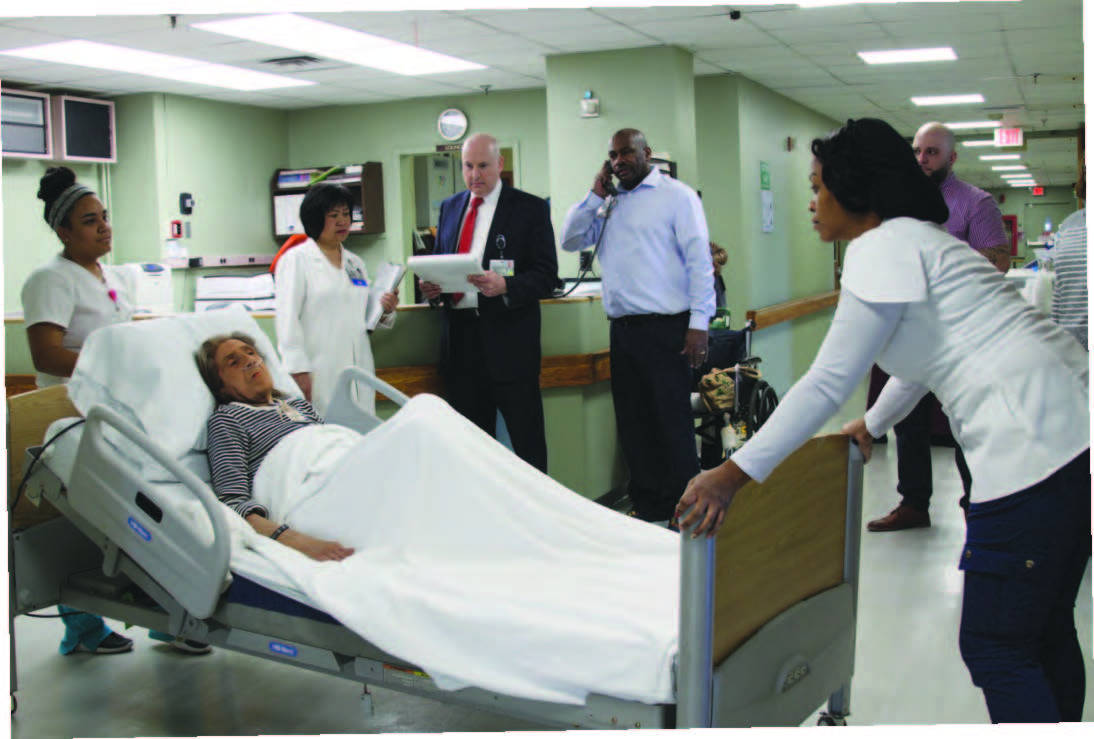
My mother. My hero. My problem?
By Ashleigh Owens
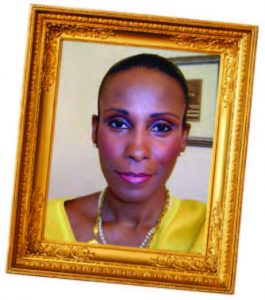 In the summer of 2017, my mother lost her life to pulmonary fibrosis, the puzzling disease that takes your life by literally taking your breath. The illness plagued her through a 16-year-long battle that began in her 30s. She never saw it coming. She was at the height of her success when the disease crept into her life, robbing her of her dreams, her mobility and, ultimately, her time. I witnessed her excruciating decline and her diminished quality of life starting when I was in grade school. During those years, I wrestled with some difficult questions about the origin of the disease, its management and, of course, whether I too might be gasping for air one day.
In the summer of 2017, my mother lost her life to pulmonary fibrosis, the puzzling disease that takes your life by literally taking your breath. The illness plagued her through a 16-year-long battle that began in her 30s. She never saw it coming. She was at the height of her success when the disease crept into her life, robbing her of her dreams, her mobility and, ultimately, her time. I witnessed her excruciating decline and her diminished quality of life starting when I was in grade school. During those years, I wrestled with some difficult questions about the origin of the disease, its management and, of course, whether I too might be gasping for air one day.
“Am I next?” I often wondered.
 You may be familiar with my mother’s work. Her name was Tracey Smith-Owens and she conducted celebrity interviews (as Tracey Smith) for EDGE until her passing. She had a knack for engaging people—including Louis Gossett, Chazz Palminteri and Frank Vincent—in thoughtful conversation, and often carried those conversations past the magazine’s pages into civilian life.
You may be familiar with my mother’s work. Her name was Tracey Smith-Owens and she conducted celebrity interviews (as Tracey Smith) for EDGE until her passing. She had a knack for engaging people—including Louis Gossett, Chazz Palminteri and Frank Vincent—in thoughtful conversation, and often carried those conversations past the magazine’s pages into civilian life.
Her own words held great weight, too. Of her fight with pulmonary fibrosis, she once wrote: My freedom is limited and my assailant is a fifty-foot tube that lingers around my ankles and is connected to a concentrator to provide me with the oxygen necessary to live. My mother often spoke about the way this culprit, which had weakened her lungs, sliced into her life with no regard for the innocent people it impacted. We shared that fear and anxiety.
 My mother was in the hospital for over a month until peacefully departing in her sleep. I never saw it coming; pulmonary fibrosis is full of surprises. My mother and her lungs were true fighters, the doctors told me. Her ability to survive and in many ways thrive for more than a decade-and-a-half astounded them.
My mother was in the hospital for over a month until peacefully departing in her sleep. I never saw it coming; pulmonary fibrosis is full of surprises. My mother and her lungs were true fighters, the doctors told me. Her ability to survive and in many ways thrive for more than a decade-and-a-half astounded them.
Throughout my mother’s illness, she constantly warned me to keep myself healthy. She was unable to identify a connection or source of her disease—and indeed, pulmonary fibrosis is very much a mystery. Her greatest fear was that it was genetic, that there might be some chance of me inheriting it. Although this was always in the back of my mind, I was primarily focused on being my mother’s protector during her trials and tribulations. The life I had known as an only child with a single mother, who was devoted to watching over me, was suddenly juxtaposed: I became a shield for her.
Seeing how pulmonary fibrosis affected my mother physically, mentally and emotionally could be overwhelming, especially when I was a teenager. We felt a distance from family and friends, who lacked an understanding of her condition. My mother knew she could rely on me to listen. She could count on me to be her cheerleader, to root her through her at-home medical therapies and doctor visits, to remind her of maintenance with lung exercises, and to step in for her on day-to-day tasks, as her pace and strength weakened over time. Our bond strengthened as two became one to fight against this illness.

www.istockphoto.com
My mother left me a recording of a February 2017 doctor visit, which included a conversation regarding her eligibility for a lung transplant. To get on the list involves meeting certain criteria, in her case to demonstrate how her lungs and heart coincide. This recording drove home for me the monumental medical obstacles she faced and her commitment to explore any options that would enable her to stay on this earth longer with me. The doctors in the recording seemed amazed as she described her journey, and her will to keep ongoing. They said my mother would make a great spokesperson for the Pulmonary Fibrosis Foundation. Hearing these words validated for me that my mother was the ultimate heroine in the fight against this life-crippling disease.
Following the loss of my mother, the fear that I might be next weighed heavily on me. It forced a certain growth. We were guardians for each other; now she wasn’t there to guard me. However, fighting alongside her all those years prompted me to explore ways I could live a healthy life that might diminish the chances of my getting this disease—and to take the initiative and see a pulmonologist early on to determine the state of my lung function. I went through a series of tests and x-rays, both of which came back with satisfactory results.
The severe (or idiopathic) pulmonary fibrosis that eventually claimed my mother usually affects people in their 50s or 60s. She was diagnosed with the disease in her 30s. She lived a decade longer than average. She was a fighter. I am in my 20s.
Fortunately, idiopathic pulmonary fibrosis rarely occurs in more than one family member. But because its causes are not completely understood, no one can say with certainty that it is not hereditary. There does in fact appear to be a genetic link in certain cases where it runs in families: Two genes, TERT and TERC, are found to be mutated in about 15 percent of idiopathic pulmonary fibrosis sufferers. However, not everyone who develops these mutations develops the disease. Needless to say, a lot more research needs to be done.
So am I next?
When I asked my doctor, he said where pulmonary fibrosis is concerned there is never really any guarantee, but emphasized that the disease doesn’t “have” to be hereditary. He said to live healthily and be proactive by monitoring the state of my lungs, and that everyone should be as curious and vigilant about their health as I am. You can choose to be oblivious to the inevitable, he added, but you do so at your own risk.
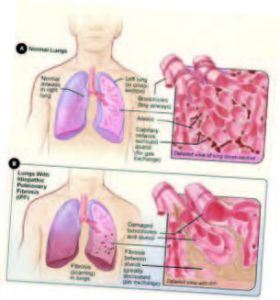
National Heart Lung and Blood Institute
Pulmonary Fibrosis: The Hard Facts
Individuals suffering from pulmonary fibrosis must struggle for every breath. Thick, scarred tissue becomes progressively stiffer until the lungs can no longer function properly, preventing oxygen from entering the bloodstream. The damage is irreparable and the cause often is unknown. In some cases, pulmonary fibrosis can be attributed to long-term exposure to environmental toxins—including airborne asbestos, metals or silica particles—or an adverse reaction to certain medicines or medical procedures, such as radiation therapy. Pulmonary fibrosis has also been linked to other conditions, including rheumatoid arthritis, lupus, connective tissue disease and even pneumonia.
Medication (including steroids and antibiotics) and various therapies can ease symptoms, but only for a while. Depending on the severity of the disease, pulmonary fibrosis can progress very quickly or linger for a decade or more. Over time, it can trigger pulmonary hypertension, heart failure and respiratory failure. For some pulmonary fibrosis patients, a lung transplant is a possibility. About half of the lung transplants performed in the U.S. each year are for pulmonary fibrosis sufferers. Not all patients are good candidates for a transplant; many who are don’t live long enough to receive a suitable pair of lungs.
We welcome the community to our programs that are designed to educate and inform. Programs are subject to change.
SEMINARS
Visit www.TrinitasRMC.org for seminar listings or check for updates on our Facebook page, www.facebook.com/TrinitasRMC.
WEDNESDAY, APRIL 10 • 5:30 PM
Spotlight On: Minority Health Awareness
Rise up for your own sake! Learn how to feel better and function better. Life is short. It’s never too late to get healthier!
Lord & Taylor, 609 N Ave. West, Westfield Call 908.994.5139 to register.
THURSDAY, MAY 16 • TBD
Spotlight On: National Women’s Health
Women are infamous for taking care of everyone other than themselves. Dr. Abu S. Alam, OB/GYN, will tell you how to stop the insanity and get serious about making the most of your female superpowers.
Elmora Public Library, 740 West Grand St., Elizabeth Call 908.994.5139 to register.
TCCC SUPPORT GROUPS
Conference Room A or Conference Room B Trinitas Comprehensive Cancer Center
225 Williamson Street, Elizabeth NJ 07207
Living with Cancer Support Groups
All events take place from 1:00 – 3:00 pm. Call (908) 994-8535 for 2019 schedule.
SPECIAL PROGRAMS
Health Services with Women In Mind
Trinitas helps provide women access to vital health services with a focus on preventive measures. These include educational programs and cancer screenings. Programs offered in English and Spanish.
To learn more about these services, contact Amparo Aguirre, (908) 994-8244 or at amaguirre@trinitas.org
Ask the Pharmacist: Medication Management
Free of charge, by appointment only. Monthly on the 4th Tuesday, 11:30 am – 1:00 pm Call (908) 994-5237.
TRINITAS HEALTH FOUNDATION EVENTS
THURSDAY, MAY 9 • 6:00 PM
Annual Gala Dinner Dance
The Venetian, Garfield, NJ
Join the foundation at this beautiful black tie event complete with fantastic live music, dancing, an incredible auction and amazing food and drink.
THURSDAY, JUNE 20 • 8:00 AM
11th Annual Andrew H. Campbell Sporting Clays Tournament
Hudson Farm Club, Andover, NJ
For more information about the Foundation or to learn more about its fundraising events, (908) 994-8249 or kboyer@trinitas.org.
Proceeds from these and other events benefit the patients of Trinitas Regional Medical Center. Making reservations for Foundation events is fast and easy on your American Express, MasterCard, Visa or Discover card.
TRINITAS CHILDREN’S THERAPY SERVICES
899 Mountain Avenue, Suite 1A, Springfield, NJ (973) 218-6394
“10 Tips…” Workshops
The series consists of workshops appropriate for parents, teachers, or individuals who work with young children and focus on practical strategies that can be easily implemented into daily classroom and/or home routines. All workshops offer suggestions that are appropriate for all children. A special emphasis is placed on children with special needs and those with an Autism diagnosis.
Workshops are $15 per class.
April 16, 2019 6:00 – 7:30 pm
10 Easy to Make Sensory Activities
May 21, 2019 6:00 – 7:30 pm
10 Tips for Improving Fine Motor Skills
June 11, 2019 6:00 – 7:30 pm
10 Tips for Creating Fun Summer Activities (Indoor and Outdoor)
For more information or to register, please contact Kellianne Martin at Kmartin@trinitas.org or by phone at (973) 218-6394 x1000.
MEDICAL AND BEHAVIORAL HEALTH SUPPORT GROUPS
Diabetes Management Support Group
Monthly, First Monday, 2:00 – 3:00 pm
Kathleen McCarthy, RN, CDE (Certified Diabetes Educator)
Open to both diabetics and non-diabetics who want to learn more about diabetes prevention.
65 Jefferson Street, 2nd Floor, Elizabeth, NJ Call (908) 994-5502 to register.
Sleep Disorders
If you are experiencing problems sleeping, contact the Trinitas Comprehensive Sleep Disorders Center in Elizabeth. Another location in Cranford at Homewood Suites by Hilton has easy access to the Garden State Parkway. Both centers are headed by a medical director who is board certified in sleep, internal, pulmonary, and intensive care medicines, and is staffed by seven certified sleep technologists.
For further information, call (908) 994-8694 or visit www.njsleepdisorderscenter.org
Narcotics Anonymous
Monday 7:00 – 8:30 pm; Sunday 12:00 noon – 2:00 pm; and Sunday 5:00 – 6:30 pm
Jean Grady, Community Liaison, (908) 994-7438
Grassmann Hall, 655 East Jersey St., Elizabeth
Alcoholics Anonymous
Friday 7:30 – 8:45 pm
Jean Grady, Community Liaison, (908) 994-7438
Grassmann Hall, 655 East Jersey St., Elizabeth
HIV Education and Support Program for HIV Positive Patients
Monthly. Call for scheduled dates/times.
Judy Lacinak, (908) 994-7605
Early Intervention Program Clinic 655 Livingston St., Monastery Building, 2nd Floor, Elizabeth
Mental Illness Support Group (NAMI) for Spanish Speaking Participants
Monthly, Fourth Friday except August, 6:30 – 8:30 pm
Mike Guglielmino, (908) 994-7275 Martha Silva, NAMI 1-888-803-3413
6 So. Conference Rm., Williamson St. Campus 225 Williamson Street, Elizabeth
This page is sponsored by
Elizabethtown Healthcare Foundation
Inspired to Care, Inspired to Give
EDGE takes you inside the area’s most creative kitchens.
 The Thirsty Turtle • Tacos
The Thirsty Turtle • Tacos
1-7 South Avenue W. • CRANFORD (908) 324-4140 • thirstyturtle.com
Look out for our tacos as they bring the flavors of the South West to the North East.
— Chef Rich Crisonio
 The Thirsty Turtle • Wings
The Thirsty Turtle • Wings
186 Columbia Turnpike • FLORHAM PARK (973) 845-6300 • thirstyturtle.com
Our wings make the mouth water and always wanting more!
— Chef Dennis Peralta
 The Famished Frog • Assorted Desserts
The Famished Frog • Assorted Desserts
18 Washington Street • MORRISTOWN (973) 540-9601 • famishedfrog.com
Our unique desserts will satisfy any sweet tooth.
— Chef Ken Raymond
 Arirang Hibachi Steakhouse • Sushi Tacos
Arirang Hibachi Steakhouse • Sushi Tacos
1230 Route 22 West • MOUNTAINSIDE (908) 518-9733 • partyonthegrill.com
Crispy wonton taco shells—featuring your choice of tuna, salmon, shrimp or crab—with rice, cucumber, red onions, avocado, cilantro and lime juice, topped with spicy mayo.
 Daimatsu • Sushi Pizza
Daimatsu • Sushi Pizza
860 Mountain Avenue • MOUNTAINSIDE (908) 233-7888 • daimatsusushibar.com
This original dish has been our signature appetizer for over 20 years. Crispy seasoned sushi rice topped with homemade spicy mayo, marinated tuna, finely chopped onion, scallion, masago caviar, and ginger. Our customers always come back wanting more.
— Chef Momo
 Luciano’s Ristorante & Lounge • Pan Seared Scallops
Luciano’s Ristorante & Lounge • Pan Seared Scallops
1579 Main Street • RAHWAY (732) 815-1200 • lucianosristorante.com
Pan-seared scallops over butternut squash risotto and wilted spinach, finished with a brown butter emulsion. This is one of the signature dishes featured on our menu since we opened 10 years ago.
— Joseph Mastrella, Executive Chef/Partner
 Garden Grille • Cauliflower Steak
Garden Grille • Cauliflower Steak
304 Route 22 West • SPRINGFIELD (973) 232-5300 • hgispringfield.hgi.com
Sautéed cauliflower steak, blistered grape tomatoes, roquette and lemon supreme sautéed in extra virgin olive oil.
— Chef Sean Cznadel
 LongHorn Steakhouse • Outlaw Ribeye
LongHorn Steakhouse • Outlaw Ribeye
272 Route 22 West • SPRINGFIELD (973) 315-2049 • longhornsteakhouse.com
LongHorn Steakhouse of Springfield is celebrating its One Year Anniversary. Come celebrate with us! Join us for Lunch or Dinner. We suggest you try our fresh, never frozen, 18 oz. bone-in Outlaw Ribeye – featuring juicy marbling that is perfectly seasoned and fire-grilled by our expert Grill Masters.
— Anthony Levy, Managing Partner
 Outback Steakhouse • Bone-In Natural Cut Ribeye
Outback Steakhouse • Bone-In Natural Cut Ribeye
901 Mountain Avenue • SPRINGFIELD (973) 467-9095 • outback.com
This is the entire staff’s favorite, guests rave about. Bone-in and extra marbled for maximum tenderness, juicy and savory. Seasoned and wood-fired grilled over oak.
— Duff Regan, Managing Partner
 Arirang Hibachi Steakhouse • Volcano Roll
Arirang Hibachi Steakhouse • Volcano Roll
23A Nelson Avenue • STATEN ISLAND, NY (718) 966-9600 • partyonthegrill.com
Hot-out-of-the-oven, crab, avocado and cream cheese rolled up and topped with a mild spicy scallop salad.
 Ursino Steakhouse & Tavern • House Carved 16oz New York Strip Steak
Ursino Steakhouse & Tavern • House Carved 16oz New York Strip Steak
1075 Morris Avenue • UNION (908) 977-9699 • ursinosteakhouse.com
Be it a sizzling filet in the steakhouse or our signature burger in the tavern upstairs, Ursino is sure to please the most selective palates. Our carefully composed menus feature fresh, seasonal ingredients and reflect the passion we put into each and every meal we serve.
Do you own a local restaurant and want to know how your BEST DISH could be featured in our Chef Recommends restaurant guide?
Call us at 908.994.5138
Singing the praises of America’s favorite sandwich.
By Caleb MacLean
The combination of inexpensive meat and cheese, topped with greens and oil and vinegar, wrapped in a long, crusty roll dates back to the 1800s in Italy, where it was a traditional sandwich. As Italian-Americans opened grocery stores and sandwich stands in northeastern cities in the early 1900s, their signature creation grew in popularity and complexity.
Who “invented” the hero? The city of Portland, Maine claims this honor, insisting that the very first one was served up by Giovanni Amato, who ran a restaurant that’s still in business more than a century later. The more likely story is that versions of this sandwich existed throughout New England in the early part of the 20th century. During World War I, a sandwich shop in Boston was selling hero sandwiches by the hundreds to sailors at a nearby naval installation. This is where the nickname “sub” supposedly originated.

United States Navy
But wait. Our very own city of Paterson says that’s wrong. No evidence of the actual term found its way into print until the 1920s, when a group of enterprising boys managed to raise the hull of a sunken submarine from the Passaic River and donated it to the Paterson Museum. After visiting the museum, Dominic Conti, who sold hero sandwiches from his grocery store on Mill Street, rechristened his lunchtime offering the submarine sandwich. New Jersey has another important connection to the sub: the first Blimpie store opened in Hoboken in the 1960s.

Upper Case Editorial
Still another origin story for the sub involves Benedetto Capaldo, a shop-keeper in New London, who sold tasty “grinders” to his Connecticut customers. When the nearby naval base began constructing submarines in the late-1930s, daily sandwich deliveries numbered in the hundreds. Naturally, they became known as submarine sandwiches, too.

Library of Congress
The term “grinder” has a dockyard history, as well. In New England, the Italian-American workers who sanded rusty hulls were called “grinders.” Their go-to sandwich took on the same name—although some claim that the sandwich got its nickname because of how difficult it was to chew through. Until recently, there actually was an acknowledged difference between subs and grinders: subs were always cold and grinders were usually hot. So back in the day, a meatball sub would have been a meatball grinder.
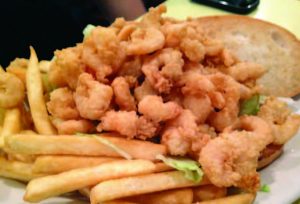
Photo by David Reber
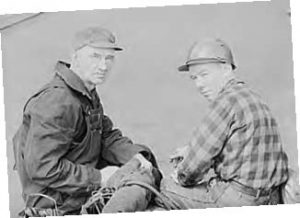
Library of Congress
What bout the hoagie? Italian-American workers at Philadelphia’s Hog Island shipyard supposedly shortened “Hog Island” to “hoagie.” But Hog Island closed down long before the nickname came into common use, so the story everyone in Philly knows is just that: a story. A better explanation is that the name started in a sandwich joint run by Al de Palma, a former jazz musician. He opened a sub shop in the City of Brotherly Love during the Depression and called his extra-large sandwiches “hoggies” (big enough to feed a hog). He eventually opened several stores around the city and, thanks to that Philly accent, hoggie became hoagie.
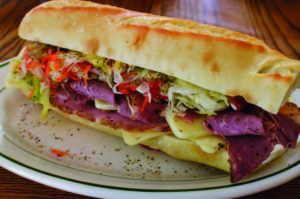
Photo by Jeffrey W.
As for the name “hero,” it became popular in the New York/New Jersey area in the late 1930s. The theory that it is derived from the Greek gyro sandwich doesn’t quite work—gyros didn’t become popular in New York until the 1960s. In 1936, a food columnist for the New York Herald Tribune described an Italian sandwich so huge you had to be a “hero to eat it.” The paper had a circulation of 300,000 at the time, so thousands of readers began calling the sandwich by its new name. Cops, bank guards and armored car crews popularized the term by the end of the decade.
Did You Know?
During the many decades when the hero sandwich was a staple of the working man’s lunchbox, one of its key construction details was the placement of the cheese. The first and last layer was almost always made of cheese slices. They prevented oil, vinegar and other condiments from migrating into the bread.
Did You Know?
Other names for the iconic sandwich include torpedo, wedge, Dagwood, zep and bomber. In New Orleans the “poor boy” (pronounced po’boy) resembles the traditional sub, but was originally constructed to mimic the courses of a meal.
In the trenches with New Jersey’s heroic food producers.
By Andy Clurfeld
Morning has broken, and I’m rough-chopping Terhune’s Winesaps, an apple that’s a little more tart than sweet, and tossing the cubes into a small stovetop pot moistened by melted Valley Shepherd butter. I add a couple of cups of Morganics oats, a dash of cinnamon, and stir, coating the oats and apples with the spice and butter. A minute later, I add water to cover, pump up the heat till the liquid bubbles, then turn down the flame and cook my oatmeal, stirring now and again, for a handful of minutes until the oats and apples are soft. Should I add a splash of maple syrup from Sweet Sourland Farms? Honey? Why not a tad bit of both? I lower the heat under my pot of oatmeal to the barest of simmers and grab myself a bowl and a spoon.
The skies are cloudy and the air outside damp, but my morning is about to take a turn for pure bright: Morganics Family Farm oatmeal is the ideal breakfast, the jump-starter of any day at all, be it crammed and tense or lazy with time for dreaming. Scott and Alison Morgan’s farm in Hillsborough is where the couple oversee operations that result in the freshest possible grains—grains grown in sustainable, eco-responsible fashion. When you eat fresh, sun-dried grains, “your body will reap the benefits,” the Morgans say I agree. My breakfast of oatmeal made with Morganics oats, Valley Shepherd butter from the creamery in Long Valley, apples from Terhune Farms in Mercer County, honey from Top of the Mountain in Wantage, and maple syrup from Sweet Sourland in Hopewell, revs up my mind, body and heart. I am inspired, fueled and gratified to be eating an all-star New Jersey meal.
It’s what I most love to do. Once upon a not-so-long-time-ago, it was much harder to do. But today there are myriad and many farmers and food artisans who are the Garden State’s true unsung heroes, people who are plying the various soils and waters of a peninsula packed with some 8.9 million people and offering an array of foods that have not traveled thousands of miles over the course of weeks before transfer to supermarket shelves. These heroes increasingly farm and produce fresh foods year-round, employing new techniques and technologies to serve forth a bounty with an impeccable pedigree: New Jersey, the Garden State. Jersey-born, Jersey-bred, Jersey-proud.
River Bend Farm/Gladstone Valley Pasture Poultry • Far Hills
Dakota and Duke are loving life. They’re doing their job, these 4-year-old guardians of livestock bred in the Italian Alps and best known by their breed name, Maremma. Huge, hairy and armed with a ferocious bark, the dogs seem to be everywhere they need to be in order to protect Corné Vogelaar’s chickens from harm that may come by air or land. “Right now, they’re guarding the layers,” Corné says. “They guard against the aerial predators and they guard against the fox and the coyotes. It’s all instinct. They are not vicious; their weapon is their alertness and their bark.”
 They work where the girls are, the egg-layers, the turkeys, the broilers—those Cornish crosses that are the pasture-raised chickens sold under the Gladstone Valley Pasture Poultry label. A sibling enterprise to River Bend Farm, headquartered in Far Hills, Gladstone Valley chickens are the American equivalent to the Bresse chicken in France, the anointed “queen of poultry, poultry of kings.”
They work where the girls are, the egg-layers, the turkeys, the broilers—those Cornish crosses that are the pasture-raised chickens sold under the Gladstone Valley Pasture Poultry label. A sibling enterprise to River Bend Farm, headquartered in Far Hills, Gladstone Valley chickens are the American equivalent to the Bresse chicken in France, the anointed “queen of poultry, poultry of kings.”
“They’re out on grass and rotated on fresh grass daily,” Corné says, describing the efficiency of the “chicken tractor,” which pulls the chickens’ homey coop to new servings of the good stuff. Dakota and Duke appear to smile as Corné gives them each a good rubbing behind the ears. Then it’s Corné’s turn to smile. He’s been loving life at River Bend Farm since 1996, shortly after he graduated Rutgers with a degree in animal science. Born and raised in Holland, he came with his family to the United States in 1988. Farming was his goal. He spent his first 10 years at River Bend, then all-cattle and all-Angus, improving the species.
“I really love the genetics and the breeding of better cattle,” Corné notes. Slowly, he “started harvesting beef and marketing it. The meat business is now our main business, and we also supply breeding stock to other farmers.” In more recent years, he’s added Berkshire pigs (“the Angus of pork”) and a few Mangalistas as well to his stock. There’s lamb and there are the chickens and there are eggs.
Corné sells to an A-List of restaurants, including the Ryland Inn, Pluckemin Inn and the Harvest Group eateries. “We are fortunate to work with excellent chefs who know how to work nose-to-tail and use everything,” he says. But home cooks also are in the River Bend/Gladstone mix: Along with a self-service egg cart, Corné keeps an on-farm store open for retail sales of frozen beef, chicken, pork and lamb on Friday afternoons and Saturday mornings. He sells at the in-season Bedminster Farmers’ Market.
As manager of the privately owned farm, Corné tends to the needs of a sizable span of animals. But he doesn’t do it alone. There are a couple additional full-time employees; his two oldest sons also work on day-to-day operations. Corné and his wife, Dawn, have eight children, six boys and two girls ranging in age from a baby born this past January to a 21-year-old whose welding skills are useful on the farm. Corné invites me into one of the cattle pastures. “Come meet Clover,” he says. “She’s more of a pet.” He maneuvers the sweet bovine in my direction and nods when I pet her. I’m loving life, too.
Hillcrest Orchard & Dairy/ Jersey Girl Cheese • Branchville
Sal Pisani is scooping ricotta into baskets set atop trays, allowing the fresh, warm cheese to drain, and talking in Italian to Raffaelle “Ralph” Saporito, who is both balling up and braiding batches of mozzarella. Sal and Ralph talk cheese in Italian almost every day, a language that bridges the near-35-year difference in their ages. Ralph was born in Raritan; at age 3, his family returned to Naples, Italy. A revered cheesemaker in Italy, he returned to the United States to teach Sal the art and craft of making classic Italian cheeses. “I’m an apprentice,” says Sal, 27, “and Ralph is my teacher.”
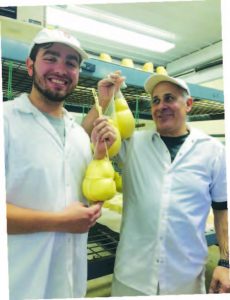 Professor in a doctoral program is more like it. Sal Pisani grew up under the tutelage of his father Rocco, who was born and reared in Calabria, Italy, but moved to the U.S. at 21, settling in Morris County. There, on threeacres, the Pisani family created their own Little Italy. “My father brought with him the traditions he picked up from his mother,” Sal says. “Dad would make cheese, cure meats. Every September, we’d make tomato sauce. It was all about food, when I was growing up, homesteading, not selling what we made.” There was a vegetable garden, animals – “chickens, goats, a horse, sheep, a peacock and an alpaca, but never more than 15 animals”—and the constant rhythm of time at the table with family and friends.
Professor in a doctoral program is more like it. Sal Pisani grew up under the tutelage of his father Rocco, who was born and reared in Calabria, Italy, but moved to the U.S. at 21, settling in Morris County. There, on threeacres, the Pisani family created their own Little Italy. “My father brought with him the traditions he picked up from his mother,” Sal says. “Dad would make cheese, cure meats. Every September, we’d make tomato sauce. It was all about food, when I was growing up, homesteading, not selling what we made.” There was a vegetable garden, animals – “chickens, goats, a horse, sheep, a peacock and an alpaca, but never more than 15 animals”—and the constant rhythm of time at the table with family and friends.
Sal graduated Monmouth University in 2014 and returned home. Cheesemaking was his passion; it drew him in as a career when he learned of a buffalo farm in need of someone to make the herd’s milk into cheese. After that ended, Sal found a new home at Hillcrest, an apple orchard and dairy in Branchville, Sussex County, owned and operated by farmer Jimmy Cuneo. His prize Jersey cows, which yield creamy, high-fat, high-protein, high-quality milk ideal for making Sal’s favorite cheeses, were waiting for the right partner. “Dairyfarms are closing every day, it seems,” Sal says. To keep going, “Jimmy had decided to outfit and expand to accommodate cheesemaking and retail. We made the jump with him. Ralph decided to come and work with us. It was the best luck to find this opportunity.”
The best luck for consumers, too. Sal’s Jersey Girl cheese line currently includes fresh mozzarella, fresh ricotta, scamorza (a dry, aged mozzarella), primo sale (a fresh basket cheese), cacciocavalo (a sharp-tasting aged cheese) and burrata, and is sold at farmers’ markets in Sparta, Morristown and Holmdel, as well as Saturdays and Sundays from 10 a.m. to 4 p.m. at the farm’s own store in Branchville.
Back in the cheesemaking room, Ralph Saporito finishes braiding mozzarella and his protege scoops a spoonful of the still-warm ricotta from a basket. Clouds to heaven—that’s what pops into my mind as I taste. Sal smiles. I sample the mozzarella, the scamorza, the cacciocavalo and know I have never, ever tasted better examples of these beloved cheeses. Italy is no longer an ocean away.
Rolling Hills Farm • Delaware Township
Opening bells at New Jersey’s farmers’ markets don’t always ring in the kind of bounty stalwart shoppers crave. May and June aren’t July, August and September, after all. Not so if you come upon the stalls of Rolling Hills Farm. Fresh from the farm in Delaware Township, Hunterdon County, May and June see bushels and baskets of cucumbers, beets, new potatoes, summer squash, snap peas, salad mixes, arugula, carrots, head lettuces, scallions, Swiss chard, broccoli, cauliflower…okay, time to catch your breath. You might lose it again when you see, up close and in person, the heart-of-spring produce grown by Stephanie Spock and John Squicciarino on a scant 1½ acres.
“Thanks to reading the works of Eliot Coleman,” John says, referring to the New Jersey-born revolutionary farmer whose Four Season Farm on Cape Rosier, Maine, does exactly what its name promises, “we farm year-round [using] high tunnels that let us have produce in May.”
 “Our customers go insane over our carrots—they’re the sweetest carrots!” adds Stephanie. They grow in theground, in high tunnels, or hoop houses—plastic-covered structures that allow a plant’s roots to take in the nutrients of good soil, all the while being protected from storms and other excesses of the elements. Not that the couple wish to defy seasonality.
“Our customers go insane over our carrots—they’re the sweetest carrots!” adds Stephanie. They grow in theground, in high tunnels, or hoop houses—plastic-covered structures that allow a plant’s roots to take in the nutrients of good soil, all the while being protected from storms and other excesses of the elements. Not that the couple wish to defy seasonality.
“No tomatoes in May,” both say, as John adds: “We recognize the seasons.”
On land leased from members of the Hamill family, of Cherry Grove Farm in Lawrence Township, Stephanie and John grow produce following organic practices and sell at the summertime Asbury Fresh Market as well as at farmers’ markets in Wrightstown and Yardley, PA. Their attraction to farming began while they worked on Brick Farm Tavern’s Double Brook Farm in Hopewell, which has become something of a breeding ground for young farmers as well as chefs learning the lessons of the seasons.
“We were 26 when we started here, in 2014,” John says. “It was stressful in the beginning,” Stephanie adds.
But they were determined. In the depths of winter, Oliver Gubenko’s Harvest Drop, which delivers produce and products from area farms to restaurants and small retail outlets, brings Rolling Hills’ fresh greens for salads and more to chefs. “It’s more work for us, but it’s worth it,” says John. The couple’s year-round, smart-farming practices evens out the workload. Rather than getting burned out by summertime work weeks of 80 to 90 hours, they put in 20 to 25 hours a week in the typically fallow cold-weather months by growing those greens and gearing up for the earlier start that results in bumper crops in May. Summer, as a result, makes for more manageable 50-hour work weeks.
“We do things in winter to make for a bounty in May and June,” John says. Meanwhile, Stephanie is studying nutrition with the goal of having a practice that engages the farm. “It all ties in,” Stephanie says. “What we grow, how we eat, how we feel.”
Chickadee Creek Farm • Pennington
Jess Niederer is standing in a propagation greenhouse on Chickadee Creek Farm, her 25-acre year-round farm in Pennington. Jess looks up, smiles and says, “I got married here, right here, on the Winter Solstice, Dec. 21, 2018.” At 76 feet by 30 feet and cloaked in light, it’s not only a lovely place for a wedding but, in Jess’s words, “the proper size for the planned growth on our farm.”
Jess’s new husband is Kevin Riley, a nurse who works at a federal clinic in Trenton; Kevin’s new wife is a veritable rock star farmer, New Jersey’s answer to Eliot Coleman of Four Season Farm in Maine, and a presence at farmers’ markets both seasonal and year-round in towns all over the state: Princeton, Denville, WestWindsor, Morristown, Rutgers Garden, Hoboken, Summit, Metuchen. Full disclosure: I don’t know how to have dinner at home any more, be it a party or an any-old-night meal, without Chickadee Creek produce at hand. Wherever Jess Niederer sells, I’ll travel to buy. So I’m listening to Jess talk in a near-empty propagation greenhouse and longing to see where the harvested produce that I know is going to the next day’s market is kept. I’m going to buy some to photograph, up close and personal, for this story. And then eat.
Jess grew up in a farming family (fourth-generation, she is), went to Cornell, where she studied ecology and conservation biology, spent a couple of years working at nearby Honey Brook Farm, and is as conversant in the business of farming as she is about how to grow, harvest and market the 56 different crops she grows at Chickadee Creek.
 To work it all by the numbers: The Niederer family farm is about 80 acres, 40 of which are tillable and 25 of which—Chickadee Creek—Jess leases from her father. She employs nine people full-time, year-round, and is “trying to get every single one of them up to the $15-an-hour benchmark” well before state requirements kick in. Now in her 10th year running Chickadee Creek, she is 35 years old, has approximately 500 members in her CSA (Community Supported Agriculture) program. When we walk into one of her high tunnels, where gorgeous arugula is grown in the ground all winter, she’s quick to note a $14,000 tractor can work the soil of this 196-foot-by-30-foot structure. The number most on Jess Niederer’s mind, however, is $1 million—that’s the amount Jess needs to buy her farmland from her father. “It would be about $4 million if it wasn’t in the state preserved farmland program,” she says. That would not come with a house—just the land that Jess works to feed the thousands of people in New Jersey who love eating Chickadee produce.
To work it all by the numbers: The Niederer family farm is about 80 acres, 40 of which are tillable and 25 of which—Chickadee Creek—Jess leases from her father. She employs nine people full-time, year-round, and is “trying to get every single one of them up to the $15-an-hour benchmark” well before state requirements kick in. Now in her 10th year running Chickadee Creek, she is 35 years old, has approximately 500 members in her CSA (Community Supported Agriculture) program. When we walk into one of her high tunnels, where gorgeous arugula is grown in the ground all winter, she’s quick to note a $14,000 tractor can work the soil of this 196-foot-by-30-foot structure. The number most on Jess Niederer’s mind, however, is $1 million—that’s the amount Jess needs to buy her farmland from her father. “It would be about $4 million if it wasn’t in the state preserved farmland program,” she says. That would not come with a house—just the land that Jess works to feed the thousands of people in New Jersey who love eating Chickadee produce.
Jess’s business model is based on year-round production, which is good for customers and also good for her staff. If you stop growing, harvesting and selling in the cold months, Jess explains, you effectively lay off your staff. “You can’t keep good people that way,” Jess says. By doing regular net-profit analyses, she is able to determine what’s working (new crops, such as ginger and sweet corn), what needs to be “kicked off” (cauliflower just wasn’t selling), and what’s most profitable (salad greens, head lettuces, flowers, tomatoes, cut greens). She’s keen on farmers’ markets: “They’re time-intensive, but the dollar value is the best.” She doesn’t work with restaurants much. She’s devoted to her CSA members. She keeps the just-harvested produce in temperature-controlled containers until that produce is taken to market.
Ah-ha! On that day, I buy several head lettuces, creamy white Japanese turnips, carrots colored purple, yellow and orange. Two days later, I buy more Chickadee produce at the West Windsor Winter Market. Obsessed? Guilty as charged, and proud of it.
 Mishti Chocolates
Mishti Chocolates
What happens when chocolate meets ginger? Or lavender? Or toffee? How about sea salt, pineapple, chile or orange? What if you learn that these chocolate partnerships, as well as the straight-up chocolates, are vegan, organic, non-GMO, soy-free and gluten-free? When the chocolates are by Mishti, it’s about “bringing a smile to every face, one chocolate at a time.” Which is the slogan chocolatier Arpita Kohli wrote when she first started making the coveted chocolates. Because what’s not in Arpita’s chocolates just might be what makes them irresistibly delicious.
 The Scotch Plains resident started making chocolates professionally when she and husband Puneet Girdhar realized their then-baby daughter Mishti had a variety of allergies, including dairy. “We have a healthy household,” says Arpita, a skilled home cook who had been making chocolates since she was a child. “So I started making vegan chocolates.” And it worked. Little Mishti, now 4½, could enjoy chocolates like her mom and dad. Arpita, creative by nature with a career in textiles, kept experimenting and perfecting the chocolate line she named Mishti. She uses 100 percent chocolate; her milk chocolate is made with almond milk and her sourcing meticulous. Her elegant packaging reflects the fundamental simplicity of her recipes and products.
The Scotch Plains resident started making chocolates professionally when she and husband Puneet Girdhar realized their then-baby daughter Mishti had a variety of allergies, including dairy. “We have a healthy household,” says Arpita, a skilled home cook who had been making chocolates since she was a child. “So I started making vegan chocolates.” And it worked. Little Mishti, now 4½, could enjoy chocolates like her mom and dad. Arpita, creative by nature with a career in textiles, kept experimenting and perfecting the chocolate line she named Mishti. She uses 100 percent chocolate; her milk chocolate is made with almond milk and her sourcing meticulous. Her elegant packaging reflects the fundamental simplicity of her recipes and products.
“I don’t want to take all the credit; both my grandmother and mother and all my aunts are excellent cooks. I grew up around great food and wonderful flavors,” Arpita says.
Life’s been busy for the chocolatier. She started the business in 2017 and, in April 2018, gave birth to a second daughter, Seher. “Puneet is my true partner,” she says, praising his support and help in marketing. Indeed, Puneet, Mishti and now Seher are popular regulars at many farmers’ markets, including those in West Windsor, Ramsey and Red Bank, and the chocolates are sold in specialty markets such as Basil Bandwagon in Flemington and Clinton and Dean’s in Basking Ridge and Chester.
For Your Little Black Book
Morganics Family Farm
morganicsfamilyfarm.com
River Bend Farm
25 Branch Road, Far Hills • 908-234-1377
RBFAngus.com • GladstoneValley.com
Hillcrest Farm/Jersey Girl Cheese
2 Davis Road, Branchville • 973-703-5148
HillcrestFarmNJ.com
Rolling Hills Farm
133 Seabrook Road, Delaware Twp. • 609-731-9175
rollinghillsfarm.org
Chickadee Creek Farm
Titus Mill Road, Pennington
chickadeecreekfarm.com
Mishti Chocolates
206-569-5269
mishti-chocolates.com
By Christine Gibbs
To move or not to move…that is the question. And these days, it’s an all-too-familiar one. This is particularly true at the extreme ends of the demographic spectrum in New Jersey, with downsizing Boomers and upwardly mobile Millennials looking—and, in some cases, competing—for apartments in or near their hometowns. This has led to an explosion in rental property development in walkable downtowns as well as traditional suburbs, and it is changing the landscape of how and where people live in the Garden State.

www.istockphoto.com
For aging Baby Boomers, apartment living has become a viable alternative to the three “traditional choices”: heading south, joining a retirement community or staying put and dealing with the consequences, whatever they may be. That’s because they are living longer and living better—however, it’s time to move on from a home with the physical and emotional burdens of high carrying costs and endless maintenance. Seniors, retirees and pre-retirees are coming to the mass realization that where they live now is not necessarily where they should live tomorrow.
Meanwhile, for young professionals in their 20s, the appeal of home ownership has lost much of its luster. Home prices and taxes in New Jersey are high and the job market—while growing—is unpredictable. For some, the mobility and convenience of renting a stylish apartment with contemporary amenities is more important than owning something that could conceivably tie them down. For others, the lack of disposable cash or minimal borrowing power makes renting the only option.
What these “bookend” groups have in common is that, when it comes to apartment living, they are more sophisticated, more determined, and more selective than ever. What do these kids want? They want out of their parents’ basements. The Failure to Launch stereotype is the exception, not the rule, in New Jersey. For most Millennials, personal finances are the driving factor regarding their next move. Modest entry-level salaries, student loan debt and a tight starter home inventory limit their choices and often that first apartment is a dog. Yet, all is not doom and gloom. The job market is strong in Central New Jersey, particularly in the tech sector, where wages can support rents of $3,000/month or more. And that can get you something very nice in a place you want to live—maybe even close to friends and family.
That being said, price and convenience are not enough to close the deal for this new generation of young apartment hunters. Millennials with healthy incomes are steeped in the belief that if they just keep looking, something perfect will come their way. They will visit dozens of apartments until they find someplace that suits the exact lifestyle they envision for themselves. They want a move-in ready unit in a hassle-free environment. In the suburbs, they typically want to be steps away from public transportation (“transit villages”) with nearby cultural and educational resources, walkable or bikeable to a dynamic town center complete with a wide variety of retail and restaurant choices. Young apartment dwellers also want to become part of a community that offers a more upbeat, healthy and relaxed atmosphere. All of this, not surprisingly, commands a higher-than-average rent…and creates an opportunity for developers who understand the vision of Millennial renters.

www.istockphoto.com
This is not your father’s suburban apartment
And yet, it’s your father who may soon be moving in. One of the charming ironies of the new wave of luxury apartments in the New Jersey suburbs is that they are equally appealing to Baby Boomers who are aging out of their longtime (and often nearby) homes. For builders, this is a gift. They have two completely different demographic groups vying for what are essentially the same units in the same developments. The 50-, 60- and 70-something renters have little in common with Millennials, other than a certain kind of pragmatism. As a group, they are adjusting, not always gracefully, to the idea of senior citizenship.
With that adjustment comes the realization that their personal finances and/or health and mobility no longer support traditional homeownership. Even a generous retirement income is still a fixed income, which means budget-busting maintenance and repair projects can be earthshaking. And the physical demands of living in a multi-story house or a large property can become overwhelming at a certain age. So it is that Boomers at or near the age of retirement often find downsizing an unavoidable if not irresistible next step. Actually, the politically correct expression is now “rightsizing.”
What does right sizing look like? For most people with “too much house,” the decision is whether to move to a smaller house or to venture into the relatively unfamiliar territory of the rental market. Abandoning the family home only to replace it with a lesser version might just be moving into someone else’s headaches. Renting, on the other hand, holds the promise of less hassle and more freedom: No more calling in a repairman every time there’s a problem—instead just pick up the phone or maybe text the “super.” No more aching joints, just leave the heavy yard work to the groundskeeper. No more worrying about safety, simply enjoy the peace of mind that secure communities provide.
Checking all the boxes
What do seniors want? Older renters often choose to remain close to the old neighborhood as a comfort zone to avoid disrupting established routines—a town or two away is fine. They want to keep seeing the same doctors, shopping at the same stores, and staying close to old friends. Popular senior-specific demands include ground floor/single-story units, regular trash removal and recycling, access to a pool or some other water feature, and a resident population that includes a reasonable cross-section of age groups.

www.istockphoto.com
Millennials have loftier goals for their dream apartment. They want to expand their personal horizons. They are not as concerned with details such as square footage and storage areas (since most of them are not dragging a lifetime of possessions with them). As a group, young renters are looking for a “live–work–play” environment so that space for an office/den and top-of-the-line technology takes precedence over more practical considerations.
Bookend renters do have much in common. Both groups are seeking an active, healthy, and stimulating community. Everyone looks forward to abandoning dependency on personal vehicles; they prefer the more green alternative of walking or biking to nearby stores and cultural and entertainment destinations. They might not be able to afford something fancy in Hoboken or Jersey City, but a well-designed apartment near a charming, revitalized town center or traditional Main Street tends to generate a lot of interest. Seniors want to enjoy the quality of life they have worked so hard to earn. Millennials want to create the living space they have always wanted. No one in either group objects to high-end amenities such as heated or lap pools, upscale bistros and specialty restaurants, comfy coffee bars, appropriately equipped gyms, movie and performance spaces, and community activities of all kinds. Something else they can agree on is 24/7 concierge-like services and high-tech security arrangements.

www.istockphoto.com
Wooing the bookend market
Recognizing the differences between these growing groups of high-end renters—while also seeing where their interests dovetail—can lead to some interesting (and, more importantly) profitable solutions from on-trend developers. The goal is to find common ground, literally and figuratively, in terms of location and also amenities, lifestyle preferences, and pricing implications. Despite the rising cost of construction, taxes, and land in the Metropolitan area, developers remain bullish on the New Jersey market. High-end, multi-use complexes are springing up everywhere. And with renewed interest in “downtown” living, the profit potential in rental ventures has never been more attractive.

Photo courtesy of AVE
Examples of some high-end, multi-family, and multi-use communities are the phased Harborside developments on the Jersey City waterfront (Mack-Kali), the new and renovated projects such as Pier Village on the Gold Coast of the Jersey Shore (Kushner Companies), and the West Side Lofts at Red Bank (Woodmont Properties), an upscale and upbeat apartment complex that has helped to transform a rag-tag neighborhood into a live-shop-eat-work-commute mecca for a broad swath of the bookend demographic. The most ambitious multi-use project on the drawing board is Riverton (North American Properties), which will stretch for more than a mile along the Raritan River in Sayreville. No formal date has been set for its completion.
Another successful developer on the high-end spectrum is AVE, a division of Korman Communities, a fourth-generation, family-owned company with a 100-year history in the real estate business. Korman was a pioneer of the hospitality approach to corporate housing starting back in the ’60s. AVE communities offer a flexible inventory of annual and month-to-month lease arrangements for completely customizable one- and two-bedroom units. The goal is to make residents feel at home, whether a short-term business professional or a right-sizing senior. As an owner/operator, it’s possible to customize even the smallest detail for AVE tenants. Lea Anne Welsh, President of AVE and COO of Korman Communities, attributes the company’s success to “a unique entrepreneurial spirit and an open-mindedness to be flexible and innovative.” The corporate mantra is Yes, we can!, says Welsh, “and then making it happen.”
The company is bullish on the New Jersey real estate market, with future plans that include expanding in the Route 78 corridor, the Princeton area, and the Jersey Shore Gold Coast.
“Korman is in the business to wow people,” adds Welsh.
While no one moves into an apartment believing it will be their last, those eyeing an upscale solution or interested in engaging a multi-use community are definitely thinking long-term. Will this work for me a year from now? Five years from now? Ten years from now? A lot of research goes into this decision, whether you are an old-timer or a first-timer. What is a “bell and whistle” and what is a truly valuable amenity? Will this apartment (or this development) suit my needs as I ease into retirement? Can I raise a family here? In what ways is this neighborhood changing and growing?
The biggest question of all, of course, is Am I ready to make the move? Once you’ve cleared that hurdle, the choices are nothing short of sensational and they are only getting better. Moving in and moving up has never been easier. Or more synonymous.

Photo courtesy of AVE
Community Spirit
Earl Wilson, who bought a home in Summit in 2000, decided it was the right time to downsize last summer and determined that renting was the right choice for a single man of a certain age. “I can’t rave enough about my decision to move here,” he says of AVE Florham Park. Wilson guesses that the number of residents under 40 and over 50 are roughly the same. What he appreciates most is the warmth and sincerity of his new neighbors: “I know everybody in my building and they know me. There are plenty of group activities, but privacy is also always respected.”
One of Wilson’s neighbors is Ashli Dyas, who moved north from Atlanta, where she left a 6,000 sq. ft. home. She and her husband, David, came to New Jersey on a corporate transfer, and decided to extend the five-month lease on their 1,400 sq ft. apartment to a year. “We just knew this is where we were meant to be,” Dyas says. “Especially since renting here would mean David would not have to face shoveling any New Jersey snow.” She quickly joined a cohort of neighbors, ranging in age from 35 to 75, who have become good friends and great company. “I feel like I’m on vacation all the time. What could be better?”
Rent by Numbers
- New Jersey is the fifth most expensive rental market in the country.
- Median gross monthly rent in NJ is $1,284 vs. US $1,012.
- Rental Vacancy Rate in NJ is 4.45% vs US 6.18%.
- Two-thirds of all Americans live where it is more affordable to rent than buy.
- 40% of current renters cannot afford the down payment to buy a house.
According to a 2017 Goldman Sachs report, Millennial Renters …
- Search online for a rental (90%).
- Cannot afford to buy (78%).
- Prefer apartment living lifestyle (56%).
- Own pets (76%).
- Carry heavy student loan debt (71%).
According to a 2016 Freddie Mac report, 55+ Renters…
- Identify top attractions as…
– affordability (60%)
– amenities (40%)
– walkability (43%)
- Prefer relocating in…
– same neighborhood (23%)
– same city (31%)
– different city (18%)
– out of state (24%)
– close to family (60%)
Home healthcare is entering an intriguing new era.
By Diane Alter
Average life expectancy in the United States has risen by 5.5 years in just the last decade—the most significant increase since the 1960s. With all the distressing news about the overall health of Americans, that’s good to hear. Unfortunately, there is a dark lining to this silver cloud. Living a half-decade longer increases the likelihood that you or someone in your family, will need some kind of long-term healthcare, accompanied by all the financial, logistical and emotional stress that entails. Indeed, 2018 U.S. Department of Health and Human Services data notes that a majority of Americans turning age 65 this year will at some point require it.
In dollars and cents, that could range from the current annual median cost of $18,720 for adult daycare to $100,375 for a private nursing home room, according to Genworth’s 15th annual Cost of Care Survey. Americans currently spend more than $300 billion a year on long-term care and services, with costs increasing across all care settings, according to David O’Leary, President of Genworth’s U.S. Life Insurance division.
“We strongly advocate people at all stages of life begin planning now for the very real possibility of needing care as they grow older,” O’Leary says. “Starting a conversation about potential long-term care needs and the issues of aging isn’t easy. But honest conversations are essential to making sure that people can live life on their own terms as they grow older.”
If you do any significant TV-watching, you’ve probably noticed a proliferation of advertisers offering to help families navigate the complex issues surrounding long-term care. That’s because there has been a proliferation of choices and options in this industry, as the number of Baby Boomers “aging out” continues to grow. Needless to say, getting on the right path can be stressful and confusing, but it’s crucial, too.
One option that has gained traction over the last decade is the in-home care option. Indeed, more and more families are looking at ways to keep their parents, grandparents and elderly loved ones at home for as long as possible. With the right type of help, the pros vastly outweigh the cons.
Start Talking Now
Conversations and plans should ideally occur before home healthcare is needed, so that when it is needed, family members and loved ones are ready to step up and step in—and those in need of care are prepared for the change. These are not easy conversations. They require a level of pragmatism and honesty that is not always part of the family culture. Also, that elderly loved one may not want to budge. On anything. The main objection tends to be a lack of privacy. Most in-home care involves a trained aide or companion, on a schedule that might also involve neighbors, friends and loved ones. That can be viewed as intrusive by someone who has lived independently for 50 years.
David Moore, Director of Sales at New LifeStyles, an online site providing information on senior care options across the U.S., confirms the fact that a high percentage of seniors will fight the in-home care idea at the beginning. That’s only natural. But families should be aware of the signs that the time for home care has come. They range from subtle changes in appearance and mood to more obvious clues—including forgetfulness, confusion, unexplained bruising, a lapse in personal hygiene, clutter, and changes in weight gain. Having seniors engaged from the start, says Moore, will make a transition easier.
“Still, it’s a sensitive subject with no easy fixes,” he admits. “Do your homework. Read the fine print on any contract. The devil is in the details. For peace of mind, I recommend installing webcams to appease everyone’s concerns.”

www.istockphoto.com
Linda Fodrini-Johnson, Executive Director and Founder of Eldercare Answers, suggests that, when searching for home healthcare, make sure the placement agency is licensed and has been in business for at least five years. Also, ask what kind of accreditations it has received. The company’s website offers an advanced search option that provides this information.
“But keep in mind that names appearing first are not always the best,” she says of searches.
“Also, guidance from an objective professional is crucial. You want to make sure the person you are bringing into your home to care for a loved one is the best.”
The Pros
Assuming a senior’s current living situation is safe and secure, the advantages of an “aging in place” strategy are many. They include:
- Comfort and Familiarity
- Greater Sense of Independence
- Personalized Attention
- Faster Recovery from Injuries
- Potential Cost Savings
- Less Stressful Environment
- Tailored Plan of Care
- Greater Family Involvement
- Less Structured Family Time
- Keeping Pets
- Maintain Neighborhood/Building Friendships
These are the primary reasons why families are looking at new ways to keep their loved ones at home as long as possible. Options to consider are full-day, half-day, four-hour, overnight, and 24-hour home healthcare—usually as part of an evolving plan. Caregivers should have some kind of medical experience, a driver’s license, and come with references. Needless to say, for the companies in this business, keeping clients in their own homes is a top priority.
Take Care Companions, which places caregivers all over New Jersey, strives for just that.
“We offer companionship and assist in areas of meal planning, personal care, medication reminders and daily activities,” explains founder Theresa Kellner. “Our aim is to offer clients independence, quality of life and dignity, without overstepping.”
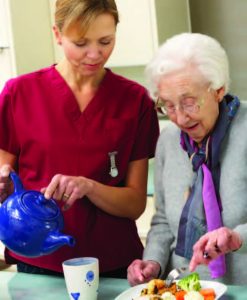
www.istockphoto.com
Kellner says her goal is to find the “perfect” person for each situation. She does that by meeting the client and the family to assess what is going on and what is needed—now and in the future, as those needs change. This intimate involvement also prevents cultural and personality clashes. “If I wouldn’t put a caregiver with my own mother, I will not put that caregiver in anyone’s home,” she says.
The future of home healthcare in some respects is difficult to predict. In most ways, however, it is not. The number of aging Americans is growing and they are living longer. That will serve as an accelerant to technical innovation driven by artificial intelligence (AI). It’s here now and it is poised to soar throughout the space in the years ahead. Voice-based virtual assistants, wearable sensors and fall-detection monitors are growing in acceptance and right around the corner are fixtures and appliances that will double as diagnostic tools.
“It’s still early days and widespread adoption is years off, but the potential exists for AI to keep elders in their homes longer and safer,” Moore notes. “Further, these devices will help researchers better understand the aging process and to assist in creating methods to delay the process.”
Fodrini-Johnson is also excited about the prospects of AI in healthcare. Still, she believes nothing will ever replace the need for constant hands-on human intervention: “To be sure, caregivers provide respect, compassion, a sense of humor, and know when a warm hug is just the right and only thing needed.”
House Calls
Although in-home caregivers are trained to spot issues of concern, they are not doctors. That is where “telemedicine” promises to play an important role. Right now, Trinitas offers its employees access to physicians and mental health practitioners for face-to-face “examinations” online—for diagnoses, prescriptions, referrals for subsequent testing, and more—under a partnership with Horizon BCBS. Trinitas is also encouraging its own medical staff to make themselves available to see patients via the same service, Horizon CareOnline, powered by American Well, the leading national telehealth provider. For more info on this service visit horizoncareonline.com.
More than 25 years have passed since Alison Sweeney first turned heads as the delightfully outlandish and manipulative ingénue Samantha “Sami” Brady on Days of Our Lives. The girl you loved to hate built a devoted following over the years, which extended to her seven-season stint as host of The Biggest Loser and, now, to The Chronicle Mysteries, which began airing on the Hallmark Channel in February. Sweeney produces and stars in the heart-pounding true crime series, which was inspired by her addiction to podcasts. Throughout her career, she has maintained a deep and genuine connection with her fans, which she continues to spin into entertainment gold. Gerry Strauss sat down with Alison to talk about her new project and the nature of what it means to be a good guy, a bad guy and a hero.
EDGE: So you know that the theme of this issue is “unsung heroes.” Who comes to mind when you hear those words?
AS: It’s hard not to think of the incredibly brave, hard-working firefighters, police, and all the first responders who helped battle the major wildfires in California in 2018. There are so many heartwarming stories of heroism and courage that came from each department. I am so proud and grateful for the work my husband, who is a CHP officer, and his colleagues do, and their constant selflessness in protecting others, as well as their commitment to their jobs. They are all heroes to me.
EDGE: Did the experiences of the contestants on The Biggest Loser strike you as being heroic?
AS: It was so inspiring for me to get to know them, to hear their personal stories and to see their efforts to rise above whatever was standing in their way and to overcome obstacles as they made significant changes to their lives. It was something different for everyone, but to not give up and to keep fighting? That’s heroic. Also, I’ve had the opportunity to work with several different charitable organizations, including hosting the MDA telethon. It was a gift to meet so many incredibly brave young people battling Muscular Dystrophy. They’re not just heroes for continuing to fight and stay strong in the face of such an overwhelming disease. They’re heroic because every patient I met still had hope and love and generosity in their heart for others.
EDGE: On Days of Our Lives, you were a superb antihero.
AS: What a lovely compliment [laughs] thank you! I am eternally grateful for the role of Sami and her misadventures.
EDGE: How much fun is it to play bad guys?
AS: I loved all of Sami’s schemes and machinations. It was always so fun to play as an actress, especially when she got caught. Those were always the best scenes.
EDGE: Does it seem strange to you now to have grown up, both as a person and an actress, on a daytime drama?
AS: Since I started at such a young age, I didn’t know anything else. I grew up having a relatively normal childhood, but then I went to work and played Sami, whose life was far from normal. I never confused my real life story with Sami’s, but it does feel as though I lived through both. In a way, I’m lucky. Just think of all the outrageous personal mistakes I got to experience vicariously through Sami [laughs] rather than making them in my real life!
EDGE: Whom did you look up to in your early soap days?
AS: Certainly, I always looked up to Deidre Hall and Drake Hogestyn through the years at Days because I was lucky to work with them a lot when I first started. It was like going to Daytime Drama University because I learned the ropes from the best. In turn, I’ve taken the opportunity to share what I know with younger actors—when they are open to it. Frankly, that’s not as common a trait anymore.
EDGE: How has social media changed the soap opera world since you became a daytime star in the 1990s?
AS: I remember joining the “World Wide Web” when soap chat rooms were first becoming a thing. I quickly found myself hooked on the instant feedback from fans. Sami always took a lot of criticism [laughs], but when she finally found herself some legitimate romantic love interests—instead of stealing someone else’s—I found the “shippers” online to be incredibly helpful. The actors that I worked with and I, we loved interacting with the fans and reading their reactions to a specific scene or cute subtle moment on camera. The fans notice everything. They appreciate the details. And they don’t forget anything. Ever. [laughs] Those are huge lessons I take with me to work every day, in whatever it is I’m doing.
EDGE: At what point did you decide that you wanted to be more than strictly a performer?
AS: I think the “producer” in me has always been there, below the surface, screaming to get out. Most people who’ve known me were not surprised at all when I announced I was developing and producing my own projects for Hallmark.
EDGE: What aspect of overseeing a project appeals to you?
AS: It’s not that I am a control freak, but I like to be a part of all the details. I love every department that contributes to making the movie the best it can be. Mostly, I love being able to choose to work with people who love it as much as I do. That is truly a blessing.
EDGE: Where did the idea for The Chronicle Mysteries come from?
AS: I am obsessed with the true crime genre— podcasts in particular. Like most people, the first season of Serial by This American Life captured my interest and I haven’t considered climbing out of the rabbit hole. There was one podcast I was listening to where the female journalist was interviewing some dodgy suspects and I thought, She’s really out there in real life, in danger. In that moment, I realized this could be a great scripted mystery series. Podcasting is a great premise because the technology is so good these days that people can really relate to it, and it’s so open that my character, Alex, could really take the podcast into any story that interests her. I think there’s a lot of potential for this…no limits!
EDGE: Has producing the series been easier, harder or different than you imagined?
AS: This is the hardest, most comprehensive project I’ve been a part of. As I mentioned, I’m so appreciative of my colleagues who are as passionate about it as I am. It’s important to me to keep challenging myself with new goals. I consider myself a storyteller, and the feedback from the viewers on the stories is so valuable to me—it makes it all worthwhile. Melissa Salmons, whom I met while she was writing at Days, is a fantastic writer and, thankfully, I got her hooked on true crime, too. We spend endless hours coming up with ideas for the episodes, the crimes, the suspects—everything. Honestly, I hope the police never have cause to look at my search history [laughs]. But seriously, there is intensity to this concept that is bigger than anything else I’ve done. I’m lucky because a lot of it can be done after I drop my kids off at school, and before soccer practice is over.
EDGE: Since you brought it up, how does a project like this fit onto your plate?
AS: I hope I continue to have the opportunity to push myself creatively, while still being the best wife and mom I know how to be. Sometimes I forget that I left the stove on and burn dinner, but the kids get to see my husband and me supporting each other, every day, through it all. To me, that’s the best role modeling we can do.
Dominic Chianese has been at this a long, long time. Longer, in fact, than even his most ardent fans probably know. Between playing the pivotal character of Johnny Ola in the first two Godfather movies and his unforgettable performance as Uncle Junior in The Sopranos, Chianese inhabited indelible characters in landmark films such as Dog Day Afternoon, All the President’s Men, And Justice for All, Fort Apache the Bronx and Unfaithful. He has also guest-starred on multiple Law & Orders and landed recurring roles on acclaimed series Boardwalk Empire, Damages and The Good Wife. His Broadway credentials stretch across three decades and include Oliver!, Richard III, Requiem for a Heavyweight and The Rose Tattoo. It was as a stage performer, actually, that Chianese first earned his show business spurs. Mark Stewart talked to Dominic about the craft of acting and his many roles, including that of Enzo on the new NBC ensemble drama The Village, which debuted on NBC March 19.
EDGE: How is film and television acting different from stage acting?
DC: It’s a different method of performance. You don’t use the body. It’s mostly in the face. If it doesn’t come out in the voice and the eyes and the facial expression, you fail.
EDGE: Did your years in the theater help you develop a screen personality?
DC: Yes, but I had to go through The Godfather first, which was my first real movie. I owe a lot to Francis Ford Coppola. That was 1971. It’s important to understand that I’d spent 20 years in the theater before I played Johnny Ola (left). I could never have made him believable without all that time in the theater… and if Francis hadn’t manipulated me when I was talking to Michael Corleone.
EDGE: How so?
DC: I started to “act” in front of the camera and you’re not supposed to do that. You’re just supposed to be the person. There’s a big difference—a different in the voice and a difference in the audience, which is the camera.
The camera does not lie, because the face is going to show everything.
EDGE: There were some impressive actors in The Godfather cast, including Marlon Brando and Al Pacino. Who else stands out among the people you’ve worked with?
DC: Oh, I’ve worked with some great actors. Al Pacino probably taught me the most. George C. Scott—who got me on East Side West/Side, my first TV show, in 1963—John Lithgow, Bobby Duvall, they all taught me something. They knew what the heck they were doing. I learned from a lot of great actors. And also my teachers: Phillip Burton and Wilson Mayer at Brooklyn College, and Walt Witcover, whose class I went to in 1962-63-64. He helped me understand what I was missing.
EDGE: How did you get into acting in the first place?
DC: My first inkling was when I was seven years old. I remember it like it was yesterday. But if you’re asking when I really put my mind to it, I was 20 years old. My voice—my love of music, of singing—is what got me into acting. I was in college, at Champlain College up in Plattsburg, New York. When I was 19, I was asked to join a group of a cappella male singers who were World War II veterans, older guys who were 26, 28, 30, on the GI Bill. They needed a bass so they gave me the job. We traveled to all the Ivy League schools. That is when I knew I was meant to do this. I knew I would definitely be performing the rest of my life. Less than a year later, the Korean conflict was starting and the college was closed down because the government needed a base. I returned to New York City. And as soon as I got off the bus, I went to the Jan Hus Presbyterian Church on East 74th Street and auditioned for Gilbert and Sullivan. I managed to land a chorus job and we toured for one whole year around the country. I was paid $110 a week, which was a fortune back in the ’50s.
EDGE: Did you think you could make a living on the stage?
DC: I spent about 10 years flirting with the idea that maybe this was not for me. The pressure was on to get an education. I ended up in 1961 with a degree from Brooklyn College, but while I was there I had Burton and Mayer, two great teachers who were experienced in the business. They encouraged me to no end. I remember I was cast in Chekov’s Three Sisters and thought I was doing a great job until the last scene. Burton said, “I don’t believe you when you’re saying goodbye to Masha. Maybe you shouldn’t be an actor”—in front of all the other kids [laughs]. Remember, I was 33 years old and had a lot of experience at that time, but I’d been doing mostly comedies and musicals. I think Burton and Wilson were in cahoots. They knew that I had natural ability creating characters and they wanted to get me to really understand the art, the technique.
EDGE: By technique what do you mean?
DC: I read a lot of Stanislavski. He developed The Method [of Physical Action] back in the 1930s. He said you can’t fake emotion. That’s all the method really is. It’s not a miracle cure or a set formula. He said you have to find your own way, really get in touch with something, so that you’re not faking the emotion. The imagination comes out in the voice. Everybody has to struggle a little to find their own technique, their “m-o”—whatever you want to call it. Once you do, you can be a lead actor or a character actor; it makes everything better, including your singing and your comedy. The analogy would be if you’re learning the piano and sit facing the opposite wall with your back to the keyboard, it’s going to be very hard to develop a technique. You have to face the piano, you have to stand a certain way and place your fingers on the keys a certain way, and that makes it easier. Most important is that, whether you’re in theater or in film, whether you’re acting in New York or a small town in Illinois, you’ve got to act the truth. You’ve got to really believe in the character and give it all you’ve got—put your concentration into the character. And then practice, practice, practice.
EDGE: Junior Soprano seemed like a challenging role. He was part manipulative psychopath and part demented old man, and you never knew how much of each you were seeing when you tuned in. Where did you draw your inspiration for that character?
DC: Junior was basically a New York-New Jersey kind of guy, so I drew him from my real life experience. Not as Mafioso [laughs] of course. I’m talking about his way of speaking. Being around so many Italian-Americans my whole life, it was easy to incorporate that into the character. Subconsciously, it was probably my father, my uncle and all the guys around the neighborhood. It was different than playing a farmer from Ohio, if you know what I’m saying…it came naturally to me.
EDGE: Junior was definitely losing it by the end of the series. Was that difficult to play?
DC: I’ve spent a good 30 years going to nursing homes and performing for people, so some came from that experience. But, again, a lot of it came from technique. You know, in order to play drunk in the theater, you have to play sober. You’re trying not to show that you’re drunk. So to play a guy with Alzheimer’s, you have to concentrate on something else, so it looks like you don’t know what you’re doing. I knew that people with Alzheimer’s have a way of not looking you in the eye, and of asking questions and not expecting an answer right back. There’s something missing.
EDGE: Everyone here in New Jersey basically adopted you from that role.
DC: I know [laughs] I know. Especially the people from Belleville!
EDGE: Tell me about your connection to New Jersey beyond the character you played in The Sopranos.
DC: Jersey is where my father did his bricklaying work. We lived in the Bronx but I used to go to Jersey all the time throughout the 1950s. I was always going to Jersey on the bus to lay brick with my father. We’d go to Newark. We’d go to Short Hills. We’d go to Paterson. We’d go to Clifton, where [Sopranos creator] David Chase lived as a little boy. I actually worked on the apartment he lived in, in 1952.
EDGE: Having been part of some legendary ensemble casts. I’m curious. Does your new show, The Village, have a live-theater ensemble feel to it?
DC: I never thought of that but, yeah, that’s definitely true. There is a good, collaborative feeling. The connections are like live theater. The writers are wonderful on this show. I’m very optimistic about The Village. It’s a show about real people, it’s not concentrated on a particular character. I just love the cast and crew on this show, I really do.
EDGE: What do you think the viewers will find most appealing?
DC: I think the fact that the issues are real. There’s a pregnant teenager, a returning veteran, immigration themes, an old man from a nursing home. It’s been very well written and represented here. It’s a show everybody can connect with no matter where you live. It’s about a community, and that’s what I like very much. We’re all in one building in Brooklyn. I grew up that way in the Bronx. We knew everyone from the first floor to the fifth floor. So for me it’s very familiar.
EDGE: Do you see a younger version of yourself when you look around the set?
DC: God no! [laughs] I do see great young actors. It takes me back to when I did my first TV show.
EDGE: So how do you strike a balance between the film and theater technique in this case?
DC: Film is different, but the imagination you use is the same—whether you do theater or film. In this case, the actual performance has to be attuned to the camera as opposed to the live audience. I feel very relaxed with The Village. When you’re relaxed and you’re connecting with your fellow actors, you’re just having a good time.

